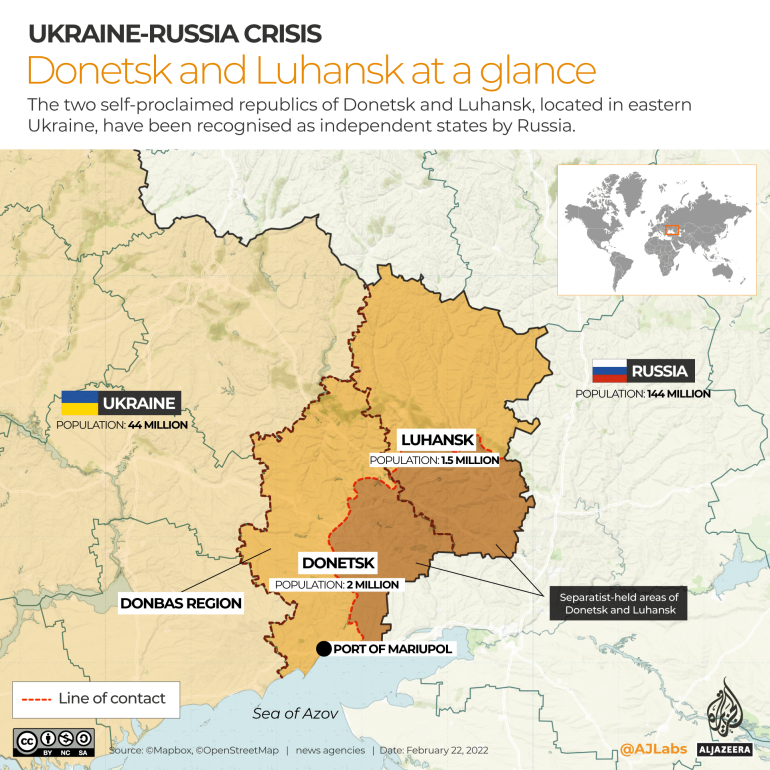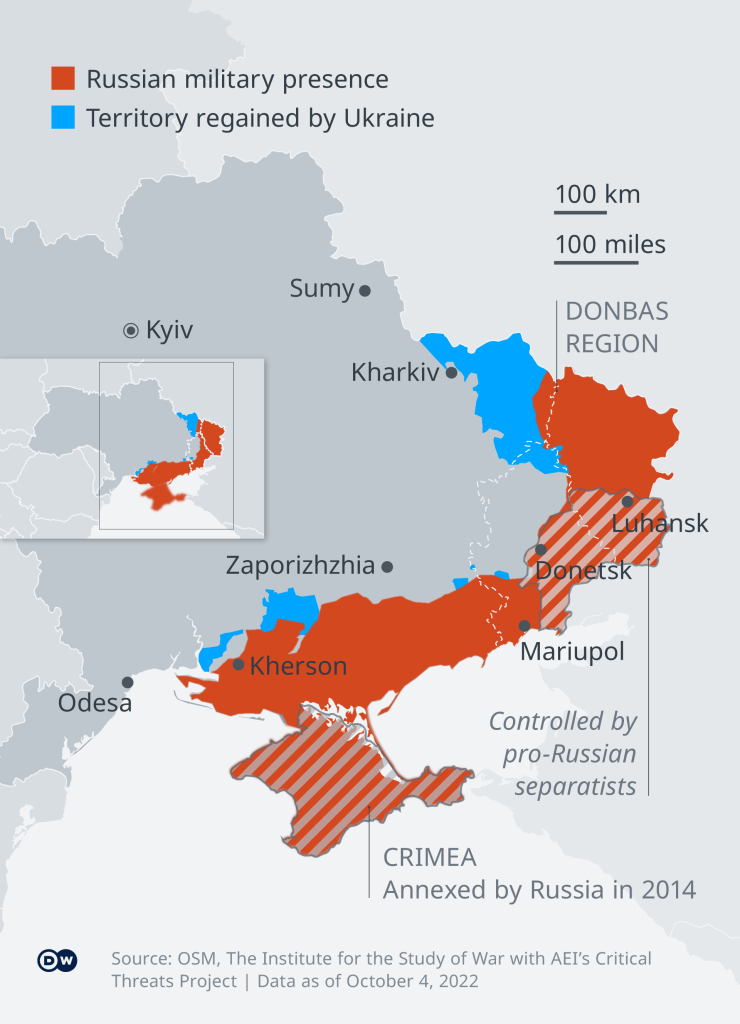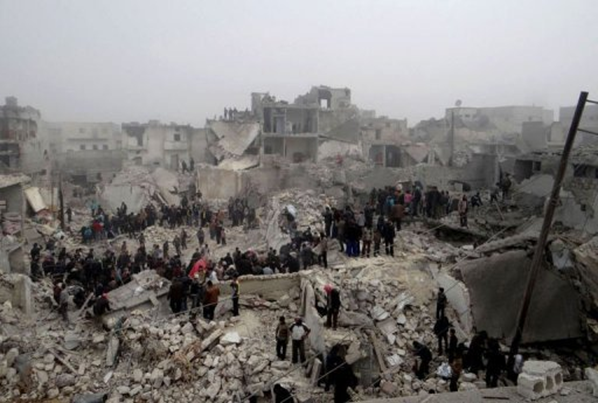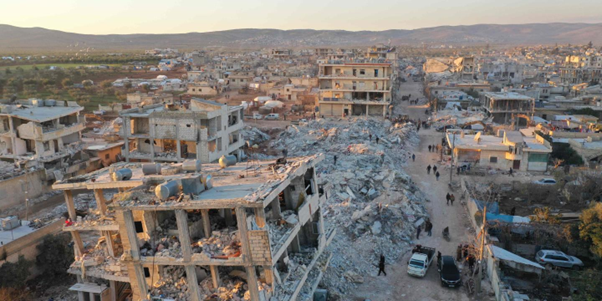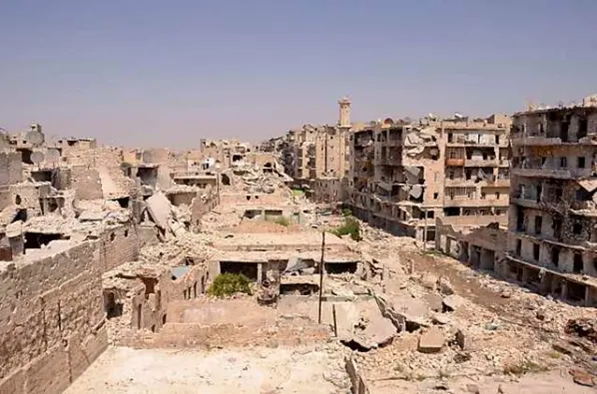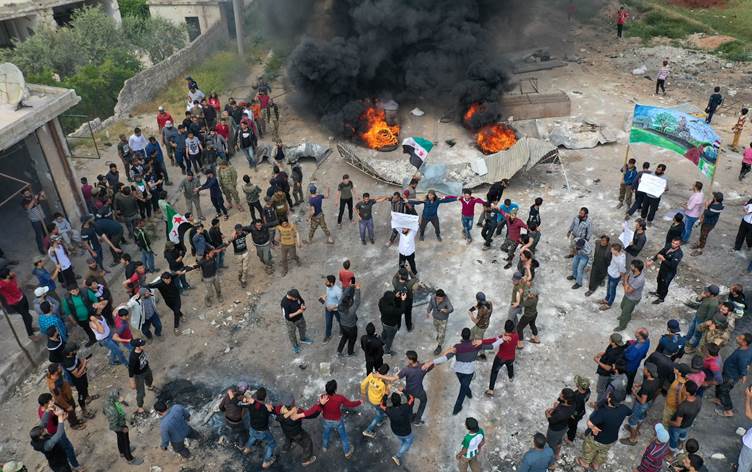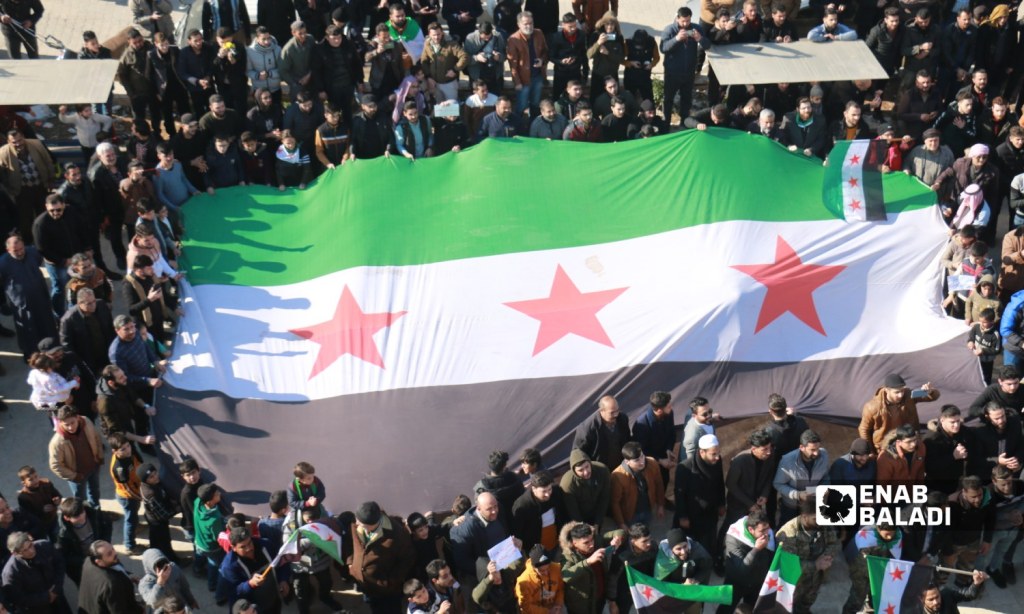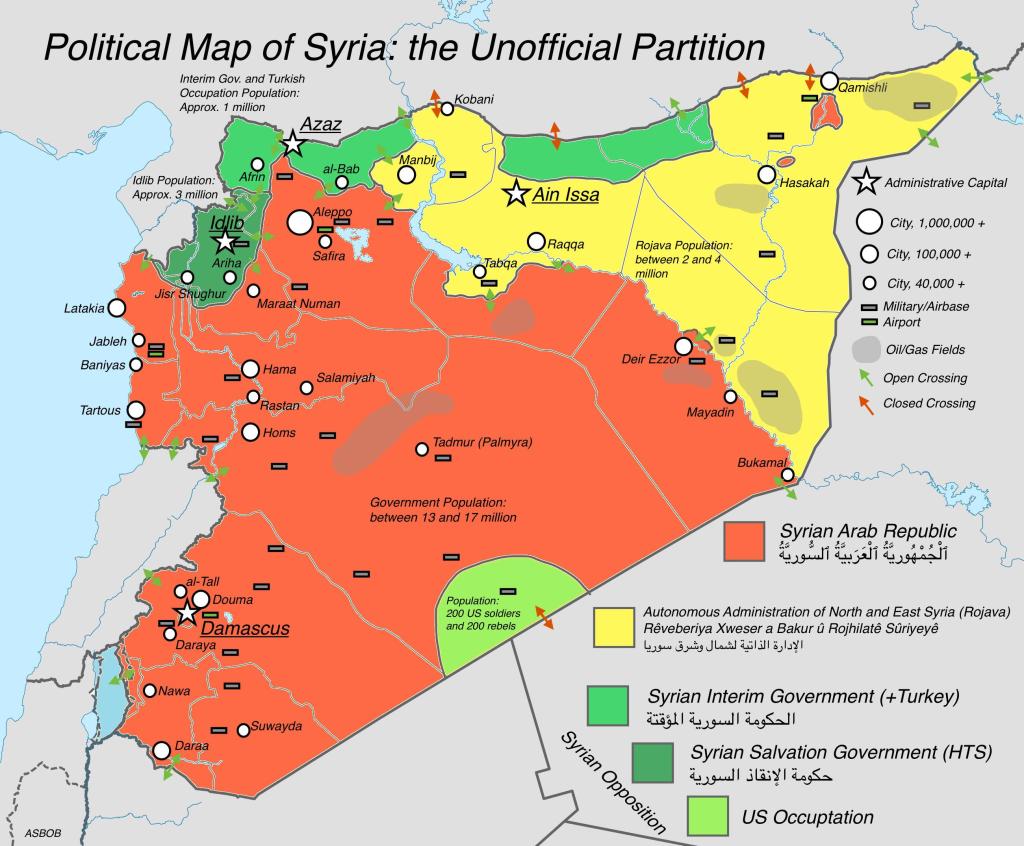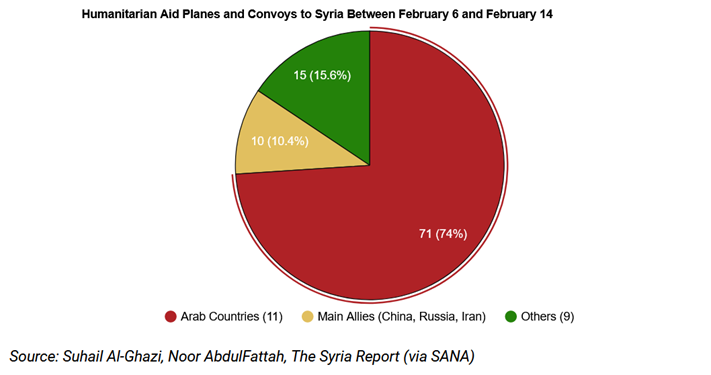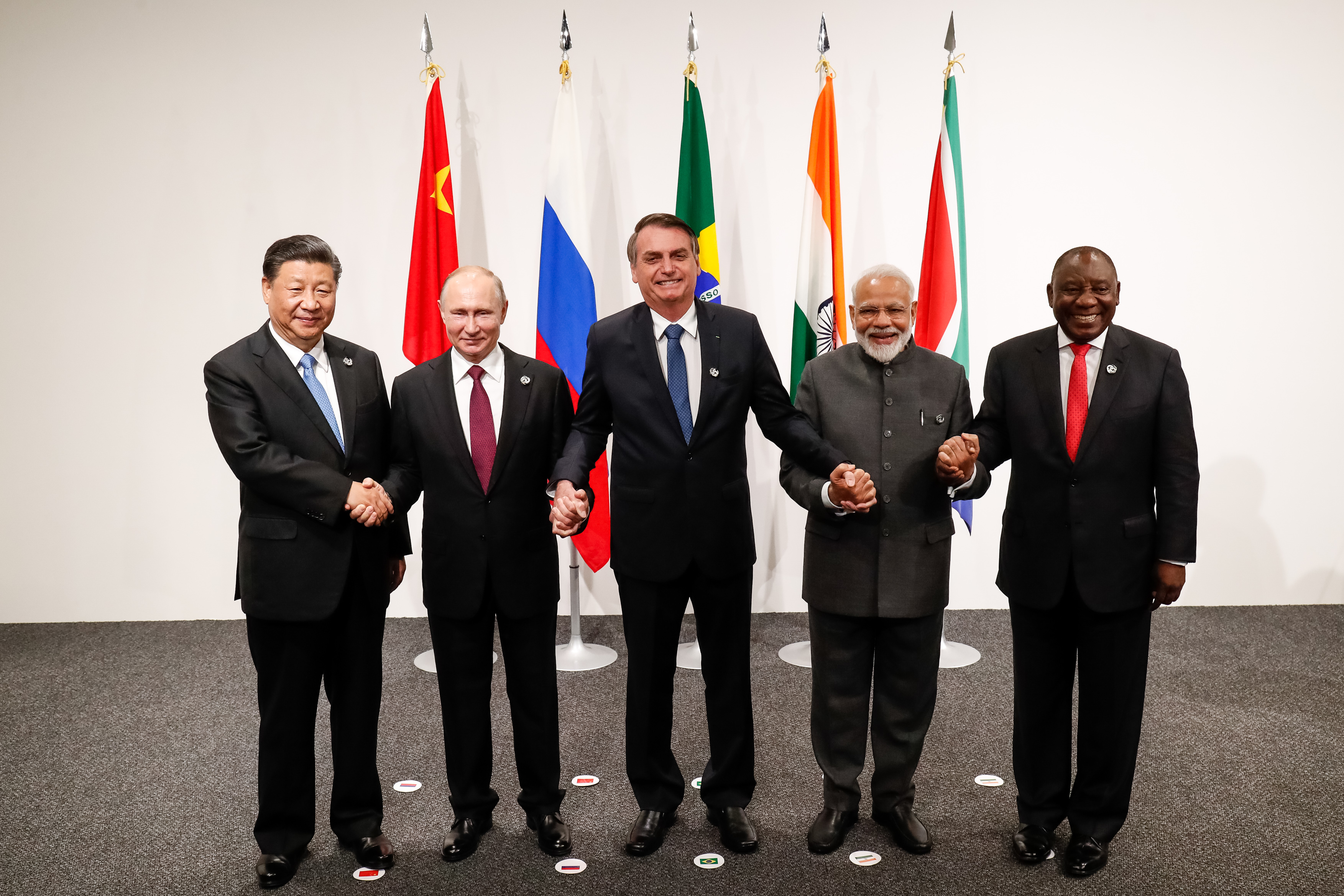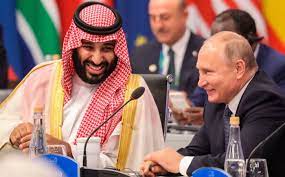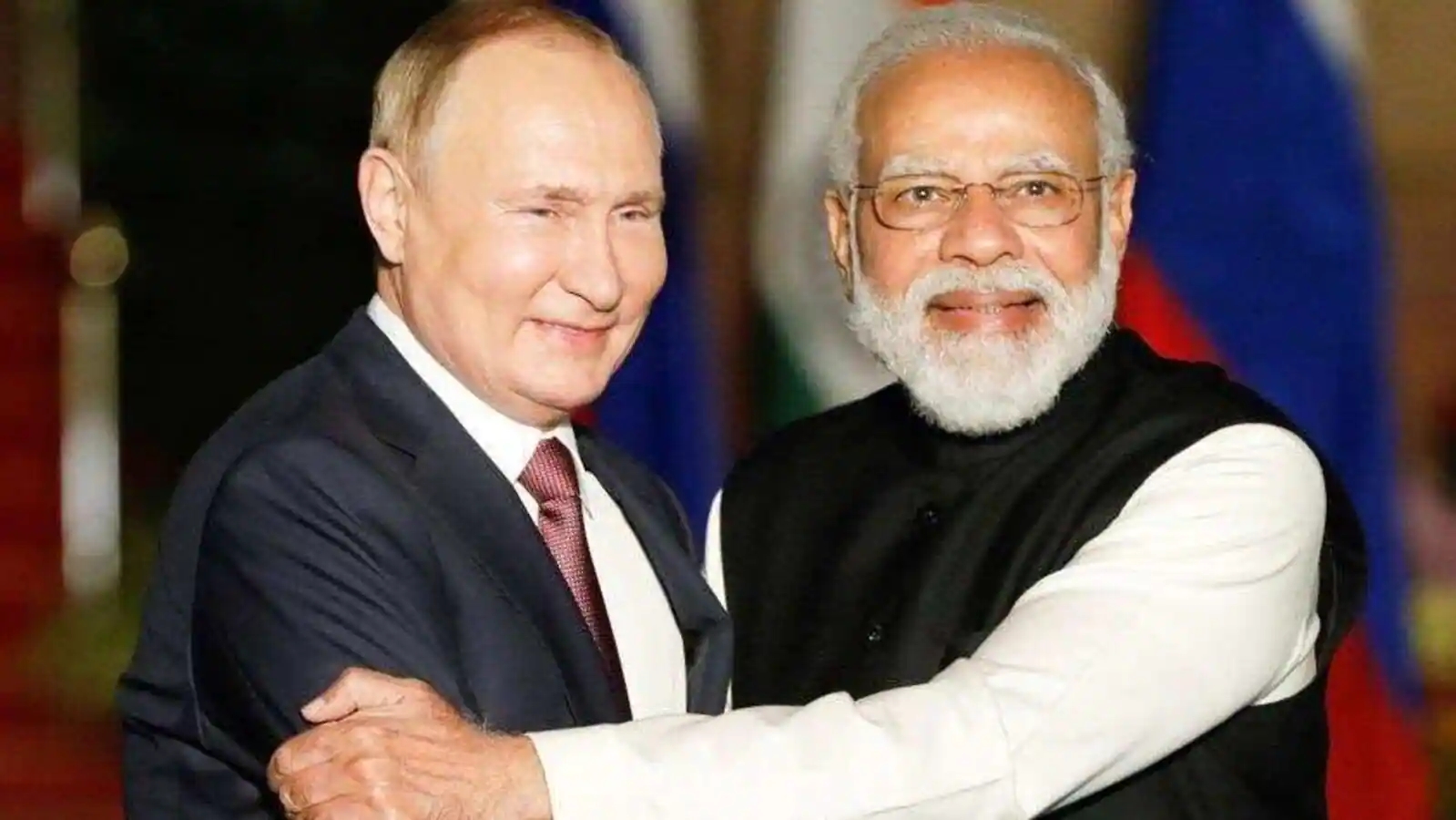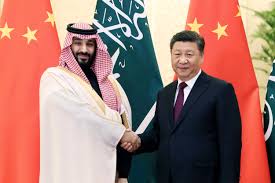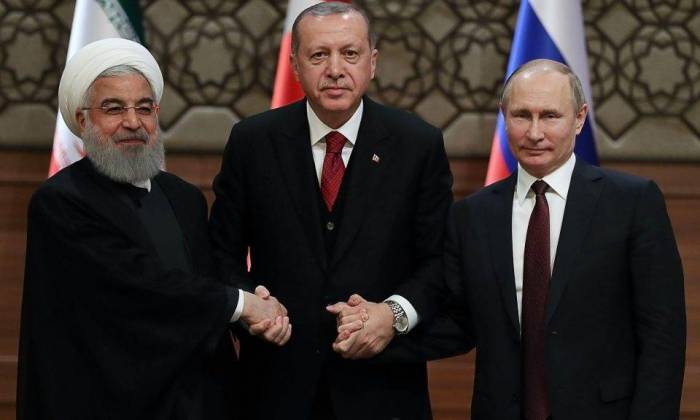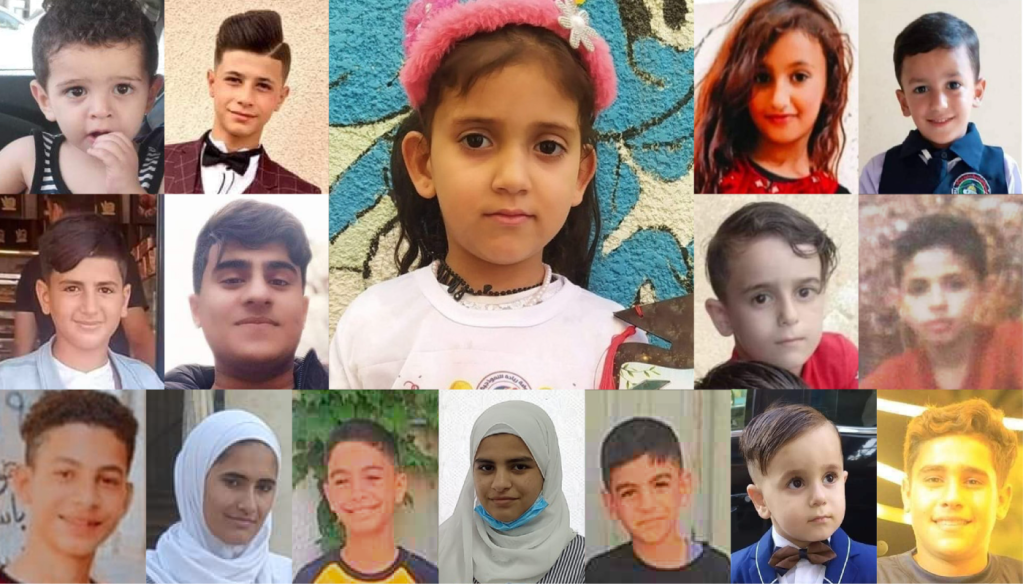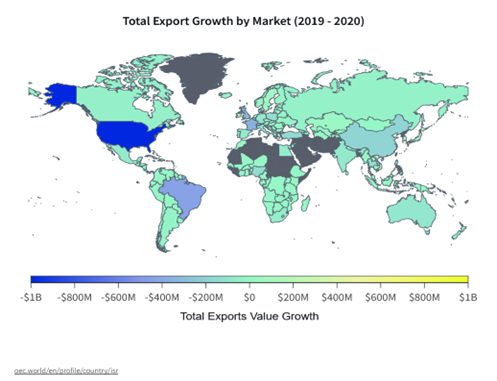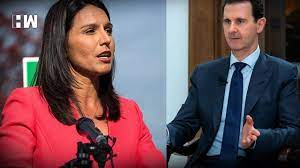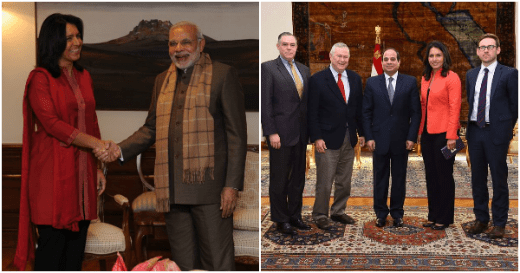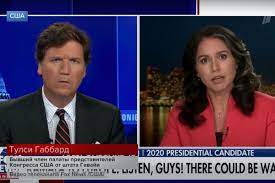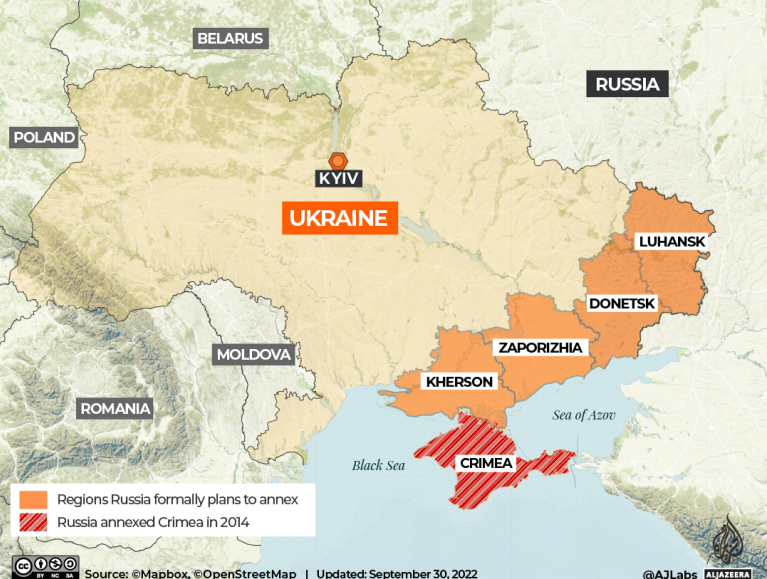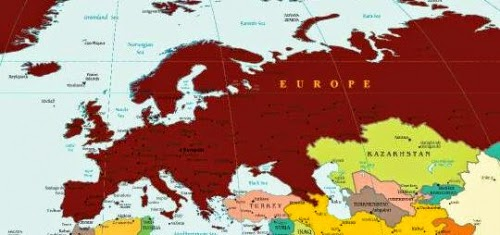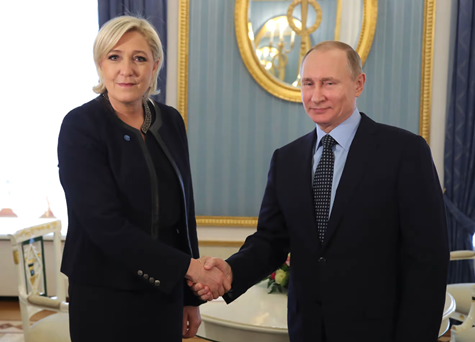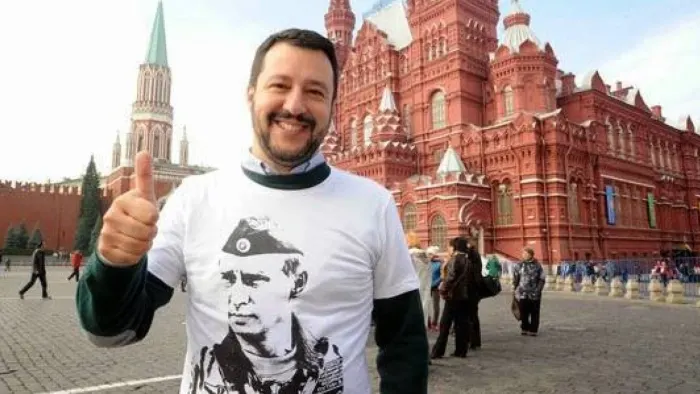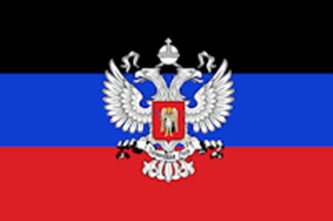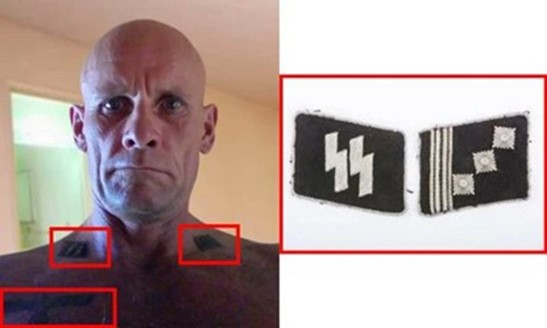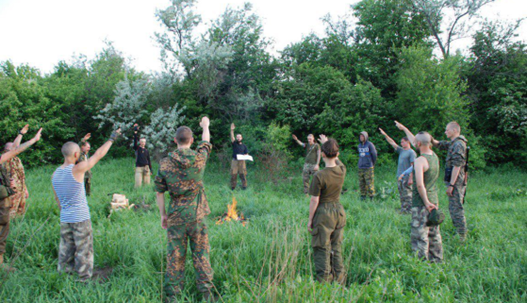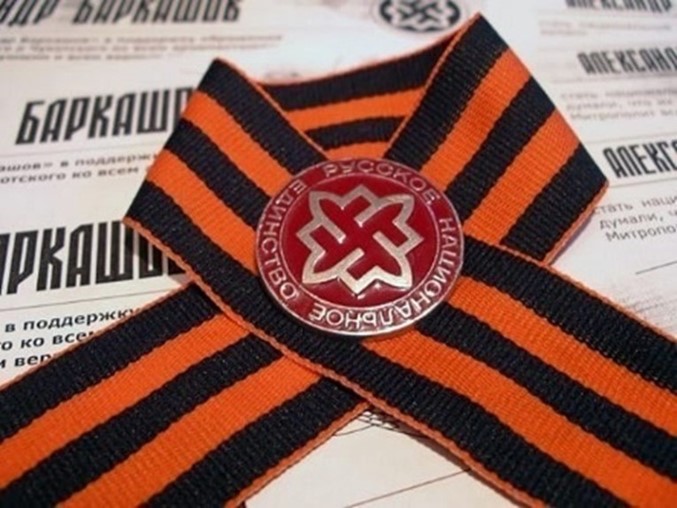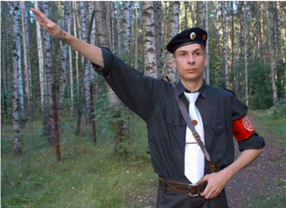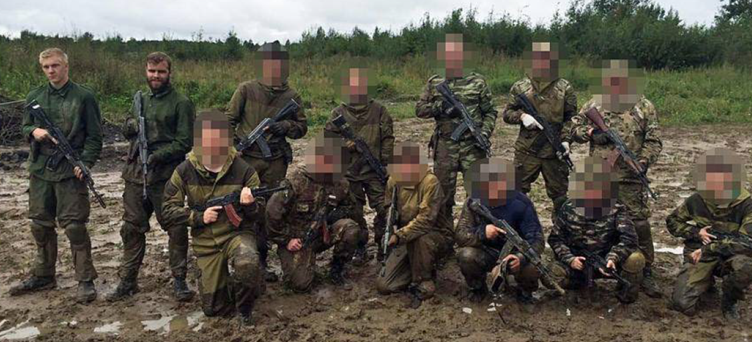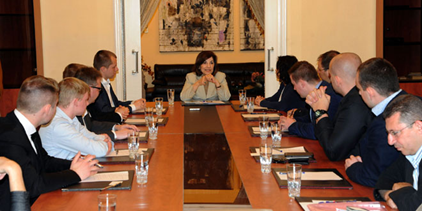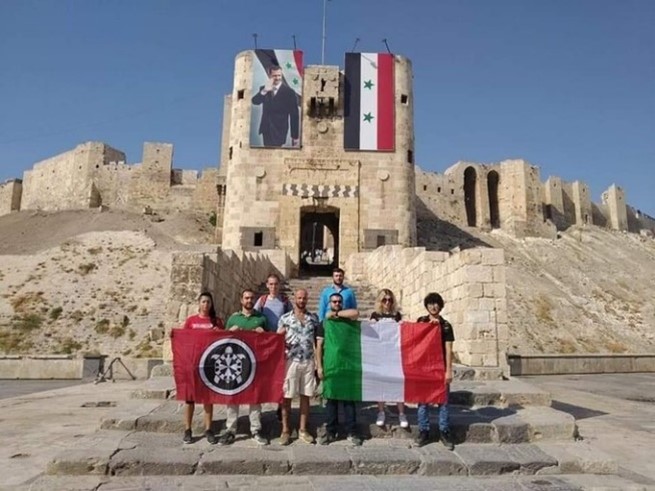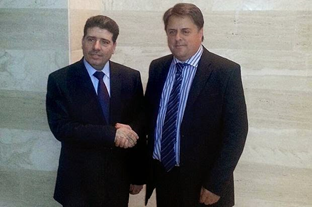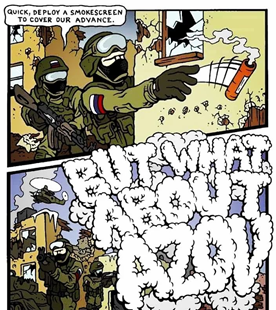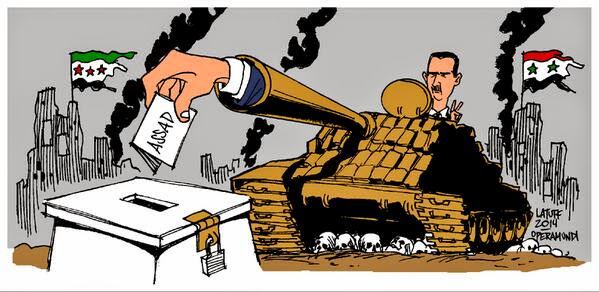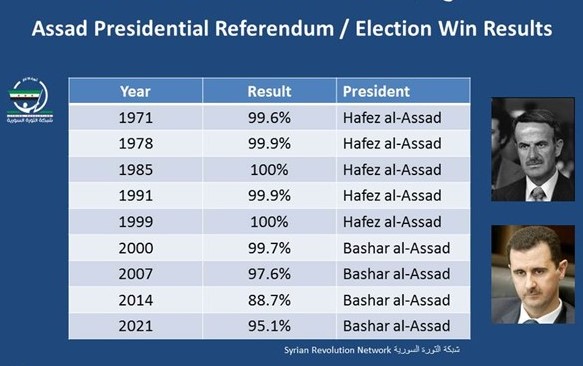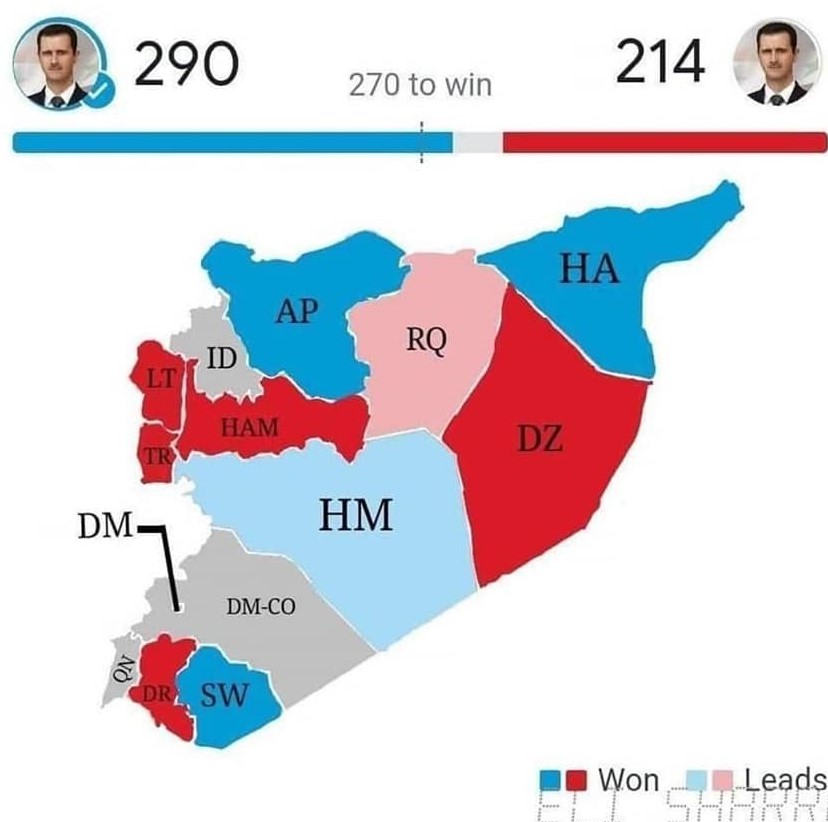Myths concocted by Putin shills, but widely believed even by well-intentioned peace activists, anti-imperialists and fence-sitters
by Michael Karadjis
Below are a series of well-known assertions that have been spread about the situation in Ukraine since 2014. All of them are complete myths, as this review will demonstrate. Of course, this is not the only place these myths are demolished, but they are so widespread that the more they are shot down, the better. Because although they may have been invented by apologists for Putin’s war of neo-Tsarist conquest, unfortunately many of them are believed by a large number of western leftists, peace activists and fence-sitters, including many who are well-intentioned and who oppose Putin and simply want the war to end; believing myths that show that ‘both sides’ are at fault often provides some kind of psychological sustenance to these positions. While the Ukrainian government can certainly be criticised for many things, like any government can, there is simply no ‘two sides’ story in a blatant and horrifically brutal act of 19th century style imperialist conquest.
This list of myths is an ongoing project and new ones will be added as time permits. All suggestions welcome. To date, this is the list of myths that will be dealt with below, along with their specific Facebook links where each was originally posted:
Myth 1. The Maidan uprising of 2014 was a “US-orchestrated coup” – https://www.facebook.com/michael.karadjis/posts/pfbid0Reoz11ZGiJeWan6bUaAmF8kcRrawnqKhfoPs4FZUFrQdxP1JxooTQP7Y3qSmnfwkl
Myth 2 – The new government in 2014 “banned the Russian language” https://www.facebook.com/michael.karadjis/posts/pfbid02HjQAJohWChRjiorEAV7DKwCLGWkL7FRowGmM4TR7UsmCNYxyUTuzzBxKzW9piLal
Myth 3 – The Crimean people voted in a referendum to join Russia, which was an act of national self-determination, and Crimea rightfully belonged to Russia historically https://www.facebook.com/michael.karadjis/posts/pfbid02apLgRkzKtdNEhciy1GVmRvxgbke4tvEA9w22DL2yh2uEsomnExrsTSnpxT8kbssdl
Myth 4: There were popular uprisings of the ethnic Russian population of the Donbas, who established their own republics in an act of national self-determination https://www.facebook.com/michael.karadjis/posts/pfbid02Vm84LwoAtYJJN15Lfh3NF89hsudv4Vw6YzxH6Vee3xczKmdh5UDVuF8CkJLNXcXvl
Myth 5: “The Ukrainian army killed 14,000 ethnic Russians in Donbas between 2014 and 2022.” https://www.facebook.com/michael.karadjis/posts/pfbid0V4AoGAfrBVi3KjzGkvDpGcrtK3ycSwkoLEvkhrKS82xMjxi6CafjZEh8oJDHuhcWl
Myth 6: The Minsk Accords offered a just way out of the crisis, Russia wanted to implement them, but the Ukrainian government refused to implement them, encouraged by the US – https://www.facebook.com/michael.karadjis/posts/pfbid034qxzr3kbzyL1crFCEt9vwjjjsHGASjhT55G9W4y3aZBTjjsorSv1gSdbkmJZ6Vu8l
Myth 7: Russia and Ukraine were ready to sign a peace agreement in April 2022 whereby Ukraine would not join NATO, but then British prime minister Boris Johnston visited Kyiv and told Zelensky not to go ahead with it, after which Ukraine withdrew from the negotiations, scuttling this chance for peace. https://www.facebook.com/michael.karadjis/posts/pfbid02v4CRiQ7PDuXEpgFAtwhN8DVRTdeVtXAL5Y2qe1cLwvC1zSoUNHZ8XhvJX1PJtTD1l
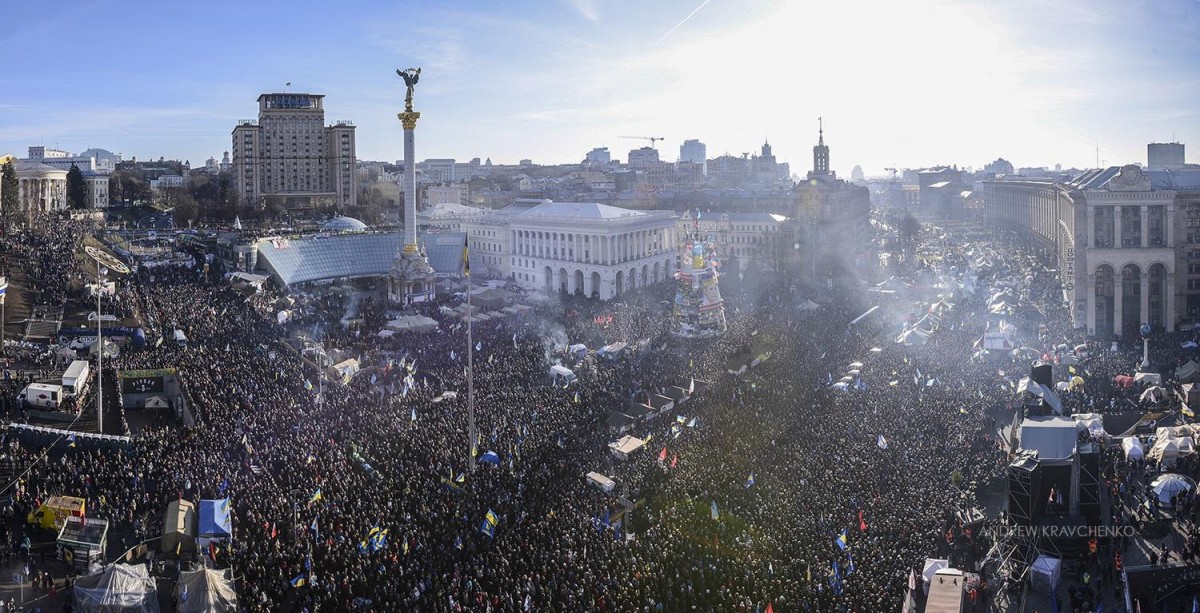
Myth 1: The Maidan uprising of 2014 was a “US-orchestrated coup.”
There was no “coup” in Ukraine in 2014, except in Crimea, Donetsk and Luhansk. When hundreds of thousands of Ukrainians marched in the streets in a sustained mobilisation over many months from November 2013 through February 2014 – against the uber-corrupt ruler, Victor Yanukovych – this is not the conventional definition of a ‘coup’, which normally refers to a conspiratorial action of a small but powerful group (eg, a section of the armed forces or other state forces) carrying out a rapid and violent ousting of a government; there are dozens of examples to choose from, for example the US-backed coups that ushered in bloody dictators like Pinochet in Chile, Suharto in Indonesia, Mobutu in Zaire, the Shah in Iran and the list is virtually endless – none of which look remotely like the popular uprising that took place in Ukraine.
Incidentally, since I called Yanukovych’s regime ‘uber-corrupt’, let’s just make an aside to back this up; we read that after his overthrow, “Ukrainian citizens who stormed his Mezhyhirya mansion discovered a palace of cartoonish opulence with guilded bathrooms, a private zoo, and a floating restaurant in the shape of a pirate ship. A good illustration of this extravagance is the $11 million he allegedly paid for a chandelier and his seven tablecloths worth a staggering $13,000.” Interesting the kinds of thieving capitalist rulers that some ‘socialists’ have come to defend in this era of ‘geopolitical’ rather than class analysis.
Yanukovych, like many unpopular despots, reacted first by bashing protestors with iron bars, then with a raft of anti-democratic anti-protest laws, then with guns, and hundreds were shot – but of course each upturn in repression only made the popular movement more determined to get rid of him, despite attempts by some of the opposition leadership in January-February 2014 to do a deal to allow him to stay as president until December 2014. In the end he made their deals pointless anyway, when he fled to Russia with his stolen billions (some estimates as high as $37 billion), following which on February 22 the entire Ukrainian parliament – every member, including every member of Yanukovych’s Party of Regions – voted to oust him as president.
If such a profoundly democratic process involving mass popular uprising and unanimous votes by a democratically-elected parliament constitute a “coup,” then logically we should be in favour of more ‘coups’.
For an excellent blow by blow account of the Ukrainian popular uprising of 2013-14, ‘Ukraine Diaries’ by Andrey Kurkov is a must. Some of it can be accessed at https://books.google.com.au/books?id=fbuUAwAAQBAJ&pg=PA3&source=gbs_toc_r&cad=3#v=onepage&q&f=false but buying the book would give you a fuller picture. Or better still, watch the amazing film, Winter on Fire at https://www.netflix.com/au/title/80031666, which covers the full 3 months of the uprising, the enormity of the demonstrations, the ongoing brutal repression – if after watching it you still think the events were a ‘coup’ rather than truly massive genuine revolution, then we’re speaking a different language.
It is a sad moment when “leftists” decide that massive popular street protests against reactionary capitalist rulers are a bad thing; they thereby reject everything they have claimed to stand for throughout their lives. Unless they think that people have no agency (and no rights to agency) and that these kinds of numbers can all be manipulated the CIA, Victoria Nuland, Hunter Biden etc. Were all these hundreds of thousands of people in the streets, and every member of parliament, personally bribed? That the US (or others) will always attempt to influence, to co-opt, a movement, is of course a given, but that is not a reason to oppose a popular uprising or mass mobilisation and hence essentially give support to a corrupt and repressive regime being overthrown.
‘Coup’ in this case seems to be just an updated version of the infamous term ‘colour revolution’, a nonsense concept invented by tankies who did not like watching the heroic Serbian working class overthrow bourgeois-nationalist butcher Milosevic in 2000, and so then extended its use to entirely different circumstances in Georgia in 2003 and different again in Ukraine in 2004. It is simply a term used for ‘popular uprising’ when it is one disapproved of by this sub-set of western lefties who assume they know what’s best for other peoples, and/or when the regime it is directed against is allied to Russian or Chinese (rather than US) imperialism or otherwise engages in some hollow “anti-imperialist” bluster.
The idea that the popular uprising was “US-orchestrated” stems from attempts by US rulers to co-opt it. One might say, ‘what business do US leaders have turning up to meet with protest leaders in another country?’ I agree – they should keep their noses out of it, just as should the Russians – but the point here is not the political morality of this – it is naïve to think powerful states don’t always try to coopt movements – but rather the fact that they had remarkably little to do with what eventuated, and simply did not have this power.
The main charge is that US advisors like Victoria Nuland played some role in choosing the caretaker who would temporarily become prime minister, after Yanukovych’s prime minister from his Party of Regions, Mykola Azarov, resigned on January 28 amidst the upsurge. Whether or not US advice was decisive in this choice of caretaker is hard to say; the idea is based on leaked correspondence involving Nuland and US ambassador Geoffrey Pyatt, where they did say they preferred the candidate (of three options), Arseniy Yatsenyuk, who was indeed the one subsequently chosen by the Ukrainian parliament as interim prime minister. Is it not possible that the Ukrainian parliament made its own decision that they preferred him of the three options?
Just out of interest though, for those with short attention spans who think jumbling together “coup”, the US, “fascists” and “banning Russian language” explains anything, it is worthwhile briefly looking at the interim leaders chosen. It is clear from Nuland’s leaked correspondence that that candidate she preferred as prime minister, Yatsenyuk, was one of the more liberal ones, as opposed to Oleh Tyahnybok, from the far-right fringe; as Pyatt notes, “we want to keep the moderate democrats together. The problem is going to be Tyahnybok and his guys.” For some reason, they also prefer Yatsenyuk over the other “moderate democrat,” Vitaly Klitschko; Nuland says “I don’t think Klitsch should go into the government. … I don’t think it’s a good idea,” and “what he (Yatsenyuk) needs is Klitsch and Tyahnybok on the outside.” Clearly, they want to keep the far-right out, but as for ‘Yats’ over ‘Klitsch’, the only clue is that Yatsenyuk was probably seen as more of a compromise candidate by Moscow, because Yanukovych had offered Yatsenyuk the prime-ministership on January 25 (before his own pm resigned!).
Indeed, in the same leak, Nuland and Pyatt also speak of the need for “some kind of outreach to Yanukovych.” So, far from the Nuland chat being part of a far-right, anti-Moscow coup, it appears that they preferred as interim pm the candidate who could best build bridges with Moscow. The only way I can read all this is that the famous ‘Nuland leak’ is about Nuland and the US government preferring to hatch a deal with Yanukovych, some kind of compromise government. After all, what most left conspiracists miss in all this is that Ukraine has both a president and a prime minister: Yanukovych was the president; the Nuland discussion did not concern his position at all, but rather who was going to be HIS interim prime minister! Unfortunately for Nuland, the US and the ‘moderate democrats’, the deal stitched together to keep Yanukovych in power till December with a new prime minister was rejected by the Ukrainian masses. US interference! Nuland advocates same interim prime minister for Yanukovych as does Yanukovych to aid the deal to him in power!
As for the interim president, Oleksandr Turchynov was appointed by the Ukrainian parliament on February 23 after it ousted Yanukovych the previous day, and there is no ‘Nuland story’ about this appointment. But did the ‘coup’ leaders (ie, the entire elected parliament) choose some rabid Russophobe to heighten tension with Moscow and with Russian-speakers in Ukraine? Well, when the post-Maidan interim government attempted to overturn the language law which Yanukovych had introduced in 2012, which gave Russian equal status to Ukrainian, this was vetoed by none other than interim president Turchynov. So, very much the moderate, the bridge-builder, trying to hold back the more virulent strains of west Ukrainian nationalism raising their head. Really, these pieces are not falling together very well for tankie fiction stories.
After all, the brief interim period was followed by presidential elections in May in which Ukrainians freely elected Petro Poroshenko; and parliamentary elections in October, in which a government was freely elected by Ukrainians, and chose Yatsenyuk, once again, to continue as prime minister (his party, the Peoples Front Party, received the highest number of popular votes, so I don’t think Victoria Nuland had anything to do with that). Tankies thus can make up stories about the US choosing the Ukrainian government, but what they really mean is that these fine people living in faraway lands disapprove of the choices democratically made by Ukrainians, and believe they have a right to demand they choose otherwise.
Regarding the parliamentary elections, the parties of Yatsenyuk and of Poroshenko received nearly half the votes between them and the majority of seats; the Opposition Bloc (ie, the renamed Party of Regions, which tankies will tell you was banned from standing) received 9.43 percent of the vote and 27 seats; while neither the fascist right (Svoboda and Right Sector, with 4.71 percent and 1.8 percent of votes respectively), nor the Communist Party of Ukraine (with 3.8 percent of votes) cleared the electoral threshold and thus got no seats.
As for Yanukovych, MPs from his own Party of Regions released a statement asserting “Ukraine was betrayed and people were set against each other. Full responsibility for this rests with Yanukovych and his entourage;” as for the allegedly ‘pro-Yanukovych’ populations of Donetsk and Luhansk oblasts, on the question of whether they consider Yanukovych “to be a legitimate President of Ukraine,” in an April 2014 survey only 32% and 28% respectively in Donetsk and Luhansk respectively said “rather” or “certainly yes” (and these were by far the biggest numbers in Ukraine), compared to 57-58% who said “rather” or “certainly no.” Western tankies are well alone on this one, of defending the born-to-rule rights of a murderous, hyper-corrupt multi-billionaire oligarch.
Myth 2: The new government in 2014 banned the Russian language
This is quite an entrenched myth. Claiming that Ukraine changed its language law to downgrade Russian language in 2014, or more colourfully that it banned the language, is a common tankie claim used to justify the Russian quasi-annexation of parts of Donetsk and Luhansk since 2014. Of course, the Russian language was not banned in 2014 nor any time since, and further, there was zero change in the language law in 2014; that did not occur until 2019.

As background, Ukrainian president Zekensky is a Russian-speaker, as are a significant proportion of Ukrainians, and indeed Zelensky was elected in 2019 largely on the votes of Russian-speakers. Russian speakers in eastern Ukraine have been the main victims of Russian mass-killing since February 2022, and have dominated the resistance to it. The famous/infamous Azov Regiment of the National Guard (often confused with the fascistic Azov Battalion which existed in 2014) is largely composed of Russian-speakers. According to a 2017 poll, 67.8% of Ukrainians “consider Ukrainian to be their native language, 13.8% claimed it to be Russian, whereas 17.4% declared that both languages are their native tongues.” However, while in western Ukraine, 92.8% are Ukrainian speakers and only 1.9% are Russian speakers, in eastern Ukraine 36.1% consider Ukrainian their language compared to 24.3% who declare Russian to be; in central regions, the figures are somewhat in between, but generally much closer to the western figures.
The 1996 constitution makes Ukrainian the only state language, indeed it says “state ensures the comprehensive development and functioning of the Ukrainian language in all spheres of social life throughout the entire territory of Ukraine.” However, there were strong protections for Russian and other minority languages, which can play an official role alongside Ukrainian in regions where these minorities are prominent. The constitution thus also states “the free development, use and defence of Russian and other languages of national minorities is guaranteed in Ukraine.”
All the language laws until 2012 were based on this well-balanced constitution. But in 2012, Yanukovych introduced a new language law which made Russian a ‘regional language’ with equal administrative status to Ukrainian wherever Russian was the language of at least 10 percent of the population, and other minority languages could have the same status. Since Russian is the language of over 10 percent in half the regions of Ukraine, this was quite wide-ranging. Many Ukrainians felt this tipped the balance too far.
So what did happen in 2014? Initially, after the fall of Yanukovych, the parliament attempted to rescind this new language law that Yanukovych had introduced just two years earlier, in 2012. The parliament’s aim in overturning this was to return to the previous law which had held sway ever since Ukrainian independence in the early 1990s, based on the 1996 constitution. As we saw, returning to the 1994-2012 linguistic framework was hardly a radical anti-Russian language step; it was merely the reversal of a recent radical change in the other direction. However, even this change did not take place, because it was vetoed by the caretaker president. Yanukovych’s radically pro-Russian 2012 law thus remained the law until 2019.
Therefore, leaving aside the blatant lie that Ukraine banned the Russian language and thus provoked a reaction from Russian-speakers in eastern Ukraine, in fact nothing at all happened to the rights of Russian-speakers in 2014, making the lie even worse. Now, of course, it may well be that just the attempt to change the law back to the original could have been a factor promoting mistrust of the new government by many Russian-speakers in eastern Ukraine; often it is not the actual content of a proposed change but the broader context, and this was the context of the newly assertive Ukrainian nationalism post-Maidan in reaction against Russian backing of Yanukovych and the immediate Russian annexation of Crimea and intervention into Donbas straight after his fall; this Ukrainian nationalism did include a virulent strain which was indeed alienating to many in the east. However, this point can be made without blatantly dishonest lies about what did happen.
It could well be argued that the Yanukovych law of 2012-14 was a better one, based on an abstract notion of complete equality of languages – even a broken clock can be right twice a day, and possibly for the wrong reasons. As a non-Ukrainian, I prefer not to get into that debate. The Ukrainian argument is based on the fact that Ukraine was a colony of Russia for hundreds of years, and the Ukrainian language was actively suppressed and discriminated against throughout that period (both under Tsarism and under Stalinism). There is also an important class aspect: Russian, the language of the colonial administration, came to dominate urban centres, even Kiev, while the villages were overwhelmingly Ukrainian-speaking; it was even considered shameful to speak Ukrainian in late Tsarist Russia, being a sign one was from the village, as rural-dwellers crowded into cities during industrialisation in the early 20th century. Therefore, Ukraine now has a right to promote its language as the national language; Russian-speakers should have the right to use their language, but it is the language of the coloniser which became dominant via colonisation and suppression. Which argument is correct? Both arguments have validity, and much depends on context and manner in which such laws are introduced and implemented. What can be said for certain, however, is that the Ukrainian constitution, and the pre-2012 law, are hardly unusual by global standards; on the contrary, they are the norm. They are even less unusual for former colonies – what of the attempts over many decades in Ireland to promote the Irish language at the expense of English, for example?
The new Language Law of 2019 did partially downgrade Russian, at the time against Zelensky’s opposition (Zelensky was just elected in 2019 with votes of Russian-speakers). This new law was pushed by the outgoing Poroshenko government as it more and more turned opportunistically to the nationalist right (ironically in 2014 Poroshenko, elected then with the votes of Russian-speakers and appealing to unity, claimed the parliament’s attempt to rescind the 2012 law was a grave mistake). This new language law made Ukrainian the only language of state throughout Ukraine. While the law is consistent with the Ukraine constitution which makes Ukrainian the official language, the constitution also has strong protections for Russian and other minority languages, especially in areas where they are the majority. The new law arguably downgrades the status of some of those protections. In schools, for example, Ukrainian is the language of instruction throughout the country; Russian can be learned in school as a language subject. However, in pre-school and primary school, Russian or other minority children can study in their own language, as the language of instruction, in addition to Ukrainian, but they cannot in high school. From an internationalist standpoint, this change is certainly regressive, but it is hardly unique for most of the world.
The new law makes Ukrainian the language of all official communication, ie in government operations, including local government. In itself, this is hardly unusual by world standards. Regarding the media, however, the law is highly regressive and certainly can be seen to violate the Ukrainian constitution. The law stipulates that any publications in Russian or other languages must be accompanied by a Ukrainian version, equivalent in content and volume, a draconian and impractical regulation. There are exceptions for Crimean Tatar language, and for languages of the EU, but not for Russian. While a former colony certainly has the right to promote the national language, doing so in a way that makes everyday life more difficult for speakers of other languages at a practical level violates their rights and divides the working classes.
However, it is the very essence of hypocrisy for Putinite shills to try to use this argument, even after 2019. What they miss is that this law only came in after years of its implementation in reverse in Russian-annexed Crimea. In 2015, Crimea made only Russian the language of school instruction, while allowing students to learn Ukrainian or Tatar as elective languages; in pre-school and primary school, instruction could also be in Ukrainian or Tatar in addition to Russian, but not in high school. It is almost as if the Ukrainian government plagiarised the Russian occupation government of Crimea’s law four years later! But the reality in Crimea is much worse than even this official downgrading; in reality, Ukrainian has been comprehensively eliminated from all Crimean schools and from all official society. One of the first acts of Russian-owned rulers in both Crimea and the Donbas was to replace multilingual signs with Russian only ones.
Likewise, in the Russia-owned Donbas statelets, almost immediately following their quasi-annexation in 2014, “the curricula have been altered to exclude the teaching of Ukrainian language and history, which makes it problematic to obtain State school diplomas,” according to a November 2014 report by the UN High Commission on Human Rights; in 2015, the curriculum was overhauled, with Ukrainian language lessons decreased from eight hours to two hours a week, while Russian language and literature lessons increased. Russia’s five-point grading system replaced Ukraine’s 12-point scheme. School leavers from then received Russian certificates with the Russian emblem, the two-headed eagle. In 2020, Russian was declared the only state language.
That does not justify the Ukrainian law of 2019 (which current president Zelensky opposed), but it is important to recognise that the chronology is in reverse: no change in 2014 in Ukraine, regressive change in late 2014 and 2015 in Donbas and Crimea under Russian occupation, followed years later by copy-cat regressive change in Ukraine – which however in no way ‘bans’ the Russian language’.
Myth 3: The Crimean people voted in a referendum to join Russia, which was an act of self-determination, and it rightfully belonged to Russia historically

Russia’s flagrant annexation of the sovereign Ukrainian territory of Crimea in 2014 was the first annexation inside Europe since the (globally unrecognised) Turkish quasi-annexation of northern Cyprus, and in a league with only very few outright annexations globally – Israel’s annexation of Palestinian Jerusalem and the Syrian Golan, Morocco’s annexation of the Western Sahara, Indonesia’s annexation of Irian Jaya and later east Timor (until 1999) spring to mind. Yet Putin apologists have attempted to justify this act of Russian imperial expansionism as an act of self-determination by the ethnic Russian majority in Crimea (which frankly reminds one of Hitler’s claim to Sudetenland), or claim it was ‘always Russia’ and so on.
On February 27, 2014, just five days after the Ukraine parliament’s vote to oust Yanukovych, masked Russian troops invaded Crimea – sovereign Ukrainian territory – attacked government buildings, raised the Russian flag over them, forced out the democratically-elected Crimea autonomous state government, replaced it with stooges from the ultra-right ‘Russian Unity’ party, which had received 4 percent of the vote in the previous elections – surely all this is a coup, isn’t it? It is a textbook coup, combined with invasion. This foreign-installed junta in Crimea then carried out, under Russian military occupation, the illegal “referendum” to leave Ukraine and join Russia, within ten days after calling it. Only two options were presented in the fake “referendum,” neither of which included the status quo. Ukrainian media was closed down.
Of course, the junta declared that 97 percent had voted for joining Russia – the usual figure plucked out of the air by dictators who throw “election” circuses. Yet Putin’s own Human Rights Council claimed the real turnout was 30-50% of voters, and that only 50-60% of those voted to join Russia. Notably, in a February 8-18 2014 Ukraine-wide poll, only 41 percent of people in Crimea favoured joining Russia – and that was far higher than anywhere else in Ukraine; we are supposed to believe that this jumped from 41% to 97% in a month!
International observers – of course, the Russian-installed junta invited various far-right/fascist parties from Europe for this show, indeed the invitees list – the French National Front, Jobbik (Hungary), Attaka (Bulgaria), Austrian Freedom Party, Belgian Vlaams Belang, Italy’s Forza Italia and Lega Nord, and Poland’s Self-Defense – reads virtually like a roll-call of the European far-right. Fascist parties throughout Europe declared their support for Crimea being “reincorporated” into Russia, its rightful place in their view, believers in the restoration of empires after all.
In contrast, the Mejils (parliament) of the Crimean Tatar nation, internationally recognised as the Indigenous people of Crimea (and likewise recognised as such in Ukraine), and a member of the Unrepresented Nations and Peoples Organisation, declared the referendum illegitimate and called for boycott, just in case anyone on the so-called ‘anti-imperialist’ left happens to think the views of Indigenous peoples should count for something. The Russian occupation regime of post-referendum Crimea then banned the Mejils, their representative body first set up by the Crimean Tatars after the Russian revolution, and the UN High Commissioner for Human Rights (OHCHR) has documented ongoing human rights violations, including detention and torture, against the Tatar population. Today, the Mejils, in exile, demands the return of Crimea to Ukraine as an essential condition in any peace talks with Russia.
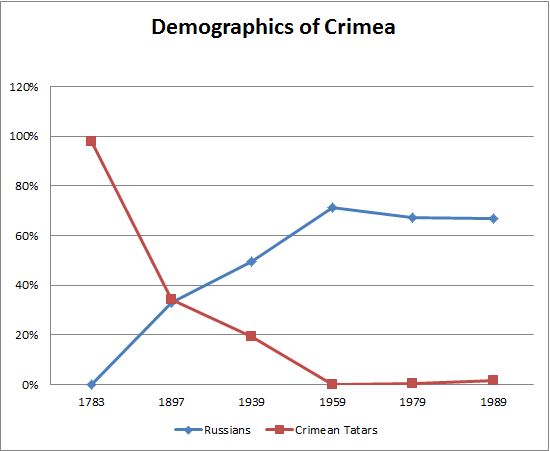
The Crimean Tatars were the majority population of Crimea since the 11th century, and remained so long after Russian settler-colonialism began with Catherine the Great’s invasion in 1783. Not until around 1900 did these Russian settlers begin to outnumber the indigenous Tatar population, who also fled Russian oppression in their hundreds of thousands. However they remained some 40 percent of the population until 1944 when Stalin expelled every man, woman and child Tatar from Crimea – hundreds of thousands of people – into central Asia, a torturous journey during which one in three died along the way. While they have been allowed to return in recent decades, such mass displacement tends to have a semi-permanent effect, and numbers were only re-growing slowly, but continually, before this process was halted by annexation. In other words, the “left” (and far-right) assertion that, since 58 percent of the population of Crimea are ethnic Russians, annexation by Russia is an act of self-determination, is a declaration of support for the results of centuries of Tsarist colonialism and the Stalinist genocide.
An interesting comparison could be made to the current debate in Australia about an Indigenous ‘Voice’ to parliament, which will be subject to referendum later this year. While the tepid and powerless ‘voice’ on offer can well be criticised for its limitations, and indeed many Indigenous leaders prefer a ‘treaty-first’ approach which would recognise their sovereignty and cede some actual power to the Indigenous nations, the main opposition is coming from the right who are vigorously opposed to any even symbolic increase in Indigenous representation. From being once the sovereign owners of the whole of Australia, Indigenous Australians have been reduced, through colonisation and genocide, to only a few percent of the population.
So, using the same simple ‘majoritarian’ principles that many Putin apologists are now using to justify the result of the staged Crimea ‘referendum’ (even if we pretend for a moment that it was legitimate and not staged under military occupation) – that 58 percent of the Crimean population are ethnic Russians and so, if that’s what they want, so it should be – what would we say if the large Anglo-Australian majority here one fine day voted to be re-annexed to ‘Great’ Britain, and the 3 percent Indigenous Australian population were opposed? Should we say, well, the (former colons) Anglo-Australians are the majority, so it should be, like the (former colons) Russians in Crimea? Or would we say that Indigenous Australians should have some special constitutional right to not have their lands returned to some foreign colonial power? I suggest that the kind of constitutionally empowered real Indigenous voice via treaty that most on the Australian left are in favour of would indeed empower the Indigenous minority to reject such a move, and rightly so.
And, more generally, when there exists more than one constituent nation in a mixed region – in this case Russians, Ukrainians and Crimean Tatars – is ‘winner take all’ the democratic solution? Take Cyprus (a place I know something about …), with its 80 percent Greek Cypriot majority and 20 percent Turkish Cypriot minority. So if the majority of the majority Greek Cypriot community vote to be united with Greece, so that should be, right? Oh, wait a minute, they tried that, with the movement against British colonialism led by the right-wing and the Orthodox church, calling for ‘Enosis’ (union) with Greece (rather than an independent bi-national federation) … thereby alienating the Turkish minority, driving them into the hands of Turkey’s military regime which eventually invaded in 1974 and the rest is history. No solution in the divided island 50 years later. Or take Bosnia, with its 44 percent Bosniak (‘Muslim’), 30 percent Serb, 18 percent Croat and 8 percent ‘Yugoslav’ (ie too mixed to be anything else) population – no majority, but if the Serbs and Croats voted together for Bosnia to be divided between Serbia and Croatia and got a slight majority of votes, so that should happen despite the views of the other communities? Indeed, since Serb and Croat fascist leaders actually tried to do that militarily in 1992-95, they were in the right, were they? The Crimea ‘solution’, in other words, is the most utterly reactionary solution possible.
On a minor point, one of the justifications often heard from Putin shills is that Russia had to seize Crimea because it has a naval base in Sevastopol (and heaven forbid that an imperialist power should lose a military base in another country, say many on the western ‘left’). Yet the Russian military’s lease on Sevastopol does not expire until 2042.
Myth 4: There were popular uprisings of the ethnic Russian population of the Donbas, who established their own republics in an act of national self-determination

In answering this, I just want to clarify where I’m coming from: I support the right of nations and peoples to self-determination, and see this as superior to any obsession with “sovereign borders,” which have always changed throughout history, both for good and bad reasons. For example, I support the struggle of the Chechen people for self-determination, including independence, from Russia if that is their choice; I don’t care about the “sovereign” borders of the inheritance of the Russian colonial empire. Ditto for Puerto Rico or Hawaii if they chose to break up the US empire’s “sovereign” borders. I supported the national liberation struggle of the Kosovar Albanians against Serbian oppression, of the Kurds against oppression in Iran, Iraq, Turkey and Syria, and so on: so why don’t I support the same self-determination of “the Russian people in Donbas”? Well, apart from the fact that even if there were such a struggle, it would currently be an irrelevant pawn for Russian imperial conquest, the more fundamental problem is that no such reality exists.
As we saw, almost immediately after Yanukovych fled to Russia (February 22, 2014), Russian forces invaded Crimea (February 27). Just as quickly after this, the first Russian forces, from the neo-Nazi Russian National Unity party, turned up in Donbas, alongside other far-right Russian paramilitary forces who had just helped conquer Crimea; the seizures of government buildings began almost immediately, launching coup d’etats against the very governments Donbas residents had recently elected, bringing to power Russian stooges and fascists in the two oblasts (provinces) Donetsk and Luhansk; indeed, the first coup was the six-day seizure of the Donetsk State Administration Building on March 1, when “a group of activists bestowed the titled of ‘People’s Governor of Donetsk’ on a local nationalist-socialist activist named Pavel Gubarev,” an RNU leader. Such a rapid march of events in itself belies the idea that Russia was only responding to grass-roots movements in these regions staging a popular movement against the new post-Maidan authorities in Ukraine; it looks much more like a planned Russian conquest.

Let’s look at the three connected myths that make up this grander myth narrative.
Sub-Myth 1: ‘Ethnic Russian Donbas’
First, it is difficult to establish exactly what an ‘ethnic Russian’ is, as opposed to a Ukrainian who speaks Russian as a first language. Think of Irish, Welsh and Scottish who speak English as their first language, and try calling them ‘English’. See what happens. This is what occurs after centuries of colonialism, in both cases. Which in terms of ruthless Russification and physical destruction of the Ukrainian intelligentsia, was probably even worse under Stalin than under the Tsars, though there is not much to choose from between them.
If we go by people’s identity, according to the 2001 census, ethnic Ukrainians formed 58 percent of the population of Luhansk Oblast and 56.9 percent of Donetsk Oblast. Those identifying as ethnic Russians formed the largest minority, accounting for 39 percent and 38.2 percent of the two oblasts respectively. In other words, Ukrainians were the same size majority in Donbas as Russians were in Crimea – yet this (post-colonisation and genocide) Russian majority in Crimea is given as a reason by the same Putin apologists to justify Russian annexation there! Furthermore, much evidence suggests a marked decline in the population identifying as ethnic Russians rather than Russian-speaking Ukrainians: in a 2019 survey carried out by the Centre for East European and International Studies in Berlin, only 12 percent and 7 percent of the residents of the Russia-owned and government-controlled parts of Donbas respectively identified as ‘ethnic Russians’, while 21 percent and 12 percent respectively declared themselves ‘mixed Ukrainian and Russian’. The impact of Russian aggression since 2014 is likely the cause of this declining identification as ‘Russian’ – how ironic given that this Russian intervention is falsely justified as protecting these ‘ethnic Russians’! Indeed, the impact of the current war seems to be even greater, with even use of Russian language among many Ukrainians markedly declining as a political choice due to revulsion against the aggression.
Therefore, to claim that the setting up of ‘independent’ republics in 2014 in Donetsk and Luhansk, and their annexation by Russia in 2022 following fake ‘referenda’ under brutal military occupation, was “the right to self-determination of the ethnic Russian population of Donbas,” is a statement of extraordinary ignorance. The population of Donbas is divided between ethnic Russians, Ukrainians who speak Russian, and Ukrainians who speak Ukrainian.
Before moving on we should clarify: from 2014 to 2022 the Russian-owned forces only controlled some 40 percent of ‘Donbas’ (approximately the same in both Donetsk and Luhansk) while some 60 percent remained under Ukraine government control. So Russia has not just annexed the parts it formerly controlled, but the entire two oblasts, plus two others that it never had any control of (Kherson and Zaporizhzhya) and where there was never any support for Russia.
Sub-Myth 2: The population of Donbas, regardless of ethnicity, wanted self-determination for the region and were oriented more to Russia than to Ukraine
It is certainly true that neither ethnicity nor language tells us anything necessarily about the views of the Donbas residents; neither being an ethnic Russian nor Russian or Ukrainian speaking does not equal a particular political opinion; the opinions of people in all three groups, in both government-controlled and Russia-controlled parts of both oblasts, are mixed. But the data does not support the myth, but rather the opposite.
Two surveys carried out in April 2014 reveal very important information, by the Kyiv International Institute of Sociology (KIIS) and by the Pew Research Centre. In the KIIS survey, to the question ‘Do you support the idea, that your region should secede from Ukraine and join Russia?’, 27 percent in Donetsk and 30 percent in Luhansk answered either ‘rather’ or ‘certainly’ yes – while some 52 percent in both oblasts answered ‘rather’ or ‘certainly’ no. These minority ‘yes’ votes in Donetsk and Luhansk were the only of any significance in all of Ukraine. The Pew research showed similar results, with the question whether regions should be allowed to secede answered in the positive by only 18 percent in eastern Ukraine (and 4 percent in west Ukraine), and only 27 percent of Russian-speakers. The KIIS survey also asked if they were in favour of Russian troops entering the region, to which under 20 percent in both oblasts said yes while substantial majorities said no.
On the question ‘Do you consider Viktor Yanukovych to be a legitimate President of Ukraine?’, only 32% and 28% respectively in Donetsk and Luhansk respectively said rather or certainly yes (by far the biggest numbers in Ukraine), compared to 57-58% who said rather or certainly no. So much for the idea that the people of Donbas were angry that “their president” was deposed.
Larger numbers support some kind of autonomy or ‘special status’ within Ukraine, but with sharp differences in the two parts of Donbas. Surveys carried out in 2016 and 2019 by the Centre for East European and International Studies found that in the Russia-owned regions, some 45% of the population were in favour of joining Russia. Of the majority opposed, 30% supported some kind of autonomy and a quarter no special status. But in the government controlled two-thirds, while a similar 30% favoured some kind of autonomy within Ukraine, the two-thirds majority favoured just Ukraine with no special status; hardly any supported joining Russia. Therefore it is difficult to say whether the overall majority necessarily even favour autonomy. Even this does not necessarily mean that the chunks seized are the regions most in favour of autonomy or separation; given the dispossession of half the Donbas population (some 3.3 of the original 6.6 million people), it more likely means a degree of subsequent relocation between the two zones, while the millions in refuge simply don’t get a say in such surveys.
Therefore, both in Donetsk and Luhansk, in both government and Russian-controlled regions, and among the dispossessed, both ‘ethnicity’ and political opinion are very mixed, there is no ‘Russian’ region or specifically even ‘pro-Russia’ region; so the regions violently seized are entirely arbitrary and correspond to no movement for ‘self-determination’ or necessarily for anything.
Truth 1. There was a degree of alienation from the new government in parts of eastern Ukraine in 2014
This is not to deny that there was broadly a sense of alienation among many in eastern Ukraine from the direction taken by the new post-Yanukovych government, regardless of ‘ethnicity’ or language; there were also geographic and other factors, including more economic connection to Russia in the east. Specifically, the new Ukraine authorities, and even more so the empowered far-right minority, projected an assertive Ukrainian nationalism, and various largely symbolic actions drove this alienation. According to the Pew survey, while 60 percent in western Ukraine thought the new government had “a good influence on the way things are going in the country,” only 24 percent in eastern Ukraine agreed, and 67 percent there assessed this influence as “bad.” Similarly, 66 percent in western Ukraine thought only the Ukrainian language should have legal standing, while 73 percent in eastern Ukraine (and 86 percent of Russian-speakers) said both Russian and Ukrainian should be official languages, underlining the centrality of the language question – my Myth 2 details the comically false assertion that Russian language was downgraded or “banned” in 2014, but even the unsuccessful attempt to revise the language law in this context would have been a factor in this alienation.
But in itself, this is not remarkable: the dominance of certain political tendencies in different regions of a country due to complex combinations of history, culture, economics etc is not uncommon: think of northern and southern England, northern and southern Italy, regions of the US, Aegean Turkey and Anatolia etc. That does not mean that the peoples of such regions would welcome a foreign military intervention because a party perceived to favour a different region’s political proclivities were in power.
Sub-Myth 3: The Russian-backed seizure of power in parts of Donbas represented this alienation of the region’s population from the new government
There was certainly a valid political struggle that could have been waged by many people in the region against certain policies of the new government; the fact that the Maidan was initially confronted by an ‘anti-Maidan’ in the east was in itself a valid expression of popular dissent. What was not valid was the almost immediate militarisation of the anti-Maidan by Russian-backed, funded, trained and armed militia and direct intervention of Russian armed forces, mercenaries, tanks and other heavy weaponry, political operatives and fascists, arbitrarily seizing control of town halls and chunks of eastern Ukraine. Simon Pirani argues that while neither the Maidan nor the anti-Maidan should be stereotyped as reactionary, in fact the “social aspirations” of the two were similar, “it was right-wing militia from Russia, and the Russian army, that militarised the conflict and suppressed the anti-Maidan’s social content.”
The idea that this militarisation, seizing of buildings and coup d’etats were a natural reflection, extension, of the civil ‘anti-Maidan’ in the east is belied by the 2014 KIIS survey. On the question ‘Do you support actions of those, who with arms capture administrative buildings in your region?’, only 18 percent in Donetsk and 24 percent in Luhansk answered rather or certainly yes, while 72 percent and 68 percent respectively in those two allegedly ‘pro-Russian’ oblasts answered rather or certainly no!
I have heard it claimed that Donbas residents were alienated because the government they elected had been overthrown in Kyiv (as if the parliament, which deposed the president – one person – wasn’t also elected by them). But how does this sit with small armed groups launching coup d’etats in Donbas overthrowing the very regional government that Donbas residents had elected?
Nor can militarisation be justified as an act of self-defence against some violent wave of government repression of the anti-Maidan, as nothing of the sort had taken place: the coup d’detats, took place immediately after the deposing of Yanukovych; the armed conflict later.
John Reiman, in his excellent review of the Ukraine Diaries, cites some passages describing this very early intervention (ie, months before the generalised war):
“On March 9 for the first time Kurkov reports on the entry of Russian agents in Ukraine. And not just any Russians – members of the fascist Russian Unity Party (RNE). ‘The members of RNE, swastikas tattooed on their necks and arms, have no qualms about negotiating with Ukraine’s regional governments and making ultimatums…’ … On April 4, Kurkov reports that 15 Russian citizens had been arrested in Donetsk with 300 Kalashnikov assault rifles, a grenade launcher, ammunition and other military equipment. … On April 7, Kurkov reports the arrest of a Russian GRU agent, Roman Bannykh. The Ukraine government seized his telephone records, which revealed that he had been coordinating the actions of the separatists in Luhansk and Donetsk. … pro-Russian activists … walk around in combat uniform, with no badges or other signs of identification, carrying AK-100 assault rifles. The Ukrainian army does not possess those rifles but the Russian army does … Of the 117 Russian citizens arrested for having taken part in disturbances, at least ten are Russian secret service agents. … On April 21 … the separatists in Slovyansk attacked and pillaged the homes of gypsies in that city. Simultaneously, Nelya Shtepa was kidnapped. She was the former mayor of that city and had originally supported the separatists but broke with them because they were being manipulated by Russian secret service agents’.”
Indeed, Russian FSB colonel Igor Girkin, known as Strelkov, one of the leaders of the first gang of far-right Russian paramilitaries in Donbas, admitted that he pulled the first trigger that led to war, stating that “if our unit had not crossed the border, everything would have ended as it did in Kharkiv and in Odesa.”
Finally, regarding the so-called “referendums” that the coup authorities in Donetsk and Luhansk carried out in May 2014, Cathy Young writing in The Bulwark provides a useful anecdote which, as she says, by itself pretty much “tells the tale”:
“On May 7, Ukrainian intelligence released the audio of an intercepted phone call between Donetsk insurgent leader Dmytro Boitsov and far-right Russian nationalist Aleksandr Barkashov (the head, as it happens, of the aforementioned Russian National Unity). In the obscenity-laden exchange, Boitsov complains that the rebels are “not ready” to hold the referendum on May 11 as planned. Barkashov responds testily: “Just put in whatever you want. Write 99 percent. What, you’re going to fucking walk around collecting papers? Shit, are you fucked in the head or something?” “Ah. All right, I got it, I got it,” replies an audibly relieved Boitsov as it dawns on him that he and his pals are not expected to hold an actual referendum, just to produce results. Barkashov continues: “Just write that 99 percent—no, let’s say 89 percent, fuck it, voted for the Donetsk Republic. And that’s it, shit, we’re fucking done.”
I mean, it may as well have been a discussion between blood-drenched Syrian tyrant Bashar Assad and some ‘election’ henchman who thought the ‘election’ circus had to be taken at least partly seriously; hell, some western ‘lefties’ are so thick they even agree with their far-right allies that those ‘elections’ were genuine!
Young continues:
“By amazing coincidence, on May 11, the separatist “election commission” of Donetsk announced that 89 percent of the voters had chosen self-rule. As I have noted earlier, the first prime minister of the Donetsk People’s Republic, “political consultant” Aleksandr Borodai, was not only a citizen of Russia but a reputed officer in the FSB (the Federal Security Service, the KGB’s successor) with a long history of involvement in far-right, ultranationalist circles.”
Conclusion
By intervening and militarising a movement, swamping it from the get-go, forcibly seizing territory, Russia completely changed the nature of Ukrainian politics. From a Ukrainian perspective, Russia, the former colonial power and neighbouring superpower had engineered a violent military conflict, slicing up Ukraine in Crimea and Donbas, thereby completely overwhelming whatever democratic voices could have arisen among Russians or Russian-speakers and supporters, while likewise hardening the right-wing nationalist views of many Ukrainians now seeing a fight for their country’s very existence. This militarisation also strengthened far-right forces in Ukraine at the time because the Ukrainian armed forces were in disarray, and the far-right took the initiative on the military front.
Whatever original support the civil anti-Maidan may have had, it is hard to know what survived the Russian-led military intervention and coups. We know that 3.3 million people of the original 6.6 million have fled Donbass since then, the majority into other areas of Ukraine. We also know that many of the irregular Ukrainian militia on the frontlines in the Ukraine-government controlled two-thirds of Donbas are residents uprooted as a result of the conflict and blame the Russian intervention. The more the far-right and fascist Russian-backed, or indeed actual Russian political figures and militia came to dominate these ‘republics’, imposing essentially totalitarian control and massively violating the human rights of the local population, the less this had anything to do with any expression of opposition to the Ukrainian government’s policies.
Finally, one might rightly ask, does this even have any relevance now, with Russia heavily bombing and destroying Russian-speaking towns and cities in Donbas, including the complete decimation of Russian speaking Mariupol, and the massive rejection of Russian rule by these populations – has anyone seen a single welcoming party in eastern Ukraine for conquerors in the last year? It is almost certain that whatever lingering pro-Russia feeling that may have existed before 2022 has now largely collapsed. Indeed, the problem with this entire discussion, even as I write it, is the danger of implying that Russia’s monstrous war has anything to do with the rights of Russians or Russian-speakers in Donbas: if that were the case, there would have been no reason for Russia to advance an inch from the control it already exerted over 40 percent of Donbas where they perhaps had more support – what would have been the purpose of annexing the more anti-Russian parts of Donbas that had been in government control, let alone annexing the other two oblasts, let alone invading and savagely bombing the whole of Ukraine?
Myth 5: The Ukrainian army bombed the Donbas for 8 years before the Russian invasion, killing 14,000 ethnic Russians between 2014 and 2022.”
As I have already fully dealt with this before, this will merely be a summary of main points; the article provides the detail.
The purpose of this claim is to argue that, while Putin may have overreacted by going all the way to invading, it was the Ukrainian army most at fault before the invasion. Even if it is admitted that Putin’s invasion is criminal and may have imperialist goals and is only using the plight of the Donbas Russians as an excuse, the claim is that this excuse is genuine.
Is any of this true?
Yes – the 14,000 figure. Yes, 14,000 were killed in the conflict in Donbas between 2014 and 2022. That’s a terrible figure, and of course many times that number were wounded, the entire region is a dead zone covered by landmines, and some 3.3 million people fled the region (ie before the millions who have fled Ukraine since the Russian invasion). But what of the rest?
“The Ukrainian army killed.”
Wrong – two sides were involved in the armed conflict – the Ukrainian army, alongside various irregular Ukrainian militia (often composed of people uprooted from their homes) on one side, and the Russia-backed and armed separatist militia of the two self-proclaimed ‘republics’ in eastern Donbas on the other, backed by Russian troops and mercenaries. Both sides shoot; both sides kill.
For example, according to a January 2015 report by Human Rights Watch, “On January 24, unguided rockets, probably launched from rebel-controlled territory, killed 29 civilians and 1 soldier in Mariupol and wounded more than 90 civilians. One rocket struck the courtyard of a school. On January 13, unguided rockets, also probably launched from rebel-controlled territory, killed 12 civilians and wounded 18 at a checkpoint near Volnovakha.” Don’t these 41 civilian lives count? What of the fact that, following the first Minsk Accord in September 2014, the ‘separatist’ militia immediately violated it by launching a 6-month battle, with hundreds of deaths, to seize the Donetsk airport from the government? How was that the Ukrainian army’s fault? What of the 298 people killed when the ‘separatists’ shot down a civilian airline in July 2014?
“ethnic Russians”
Ethnic Russians are a minority of around 38-39 percent of the population in Donbas, so it is unlikely that all or most killed are “ethnic Russians,” but that is not the point of this part of the assertion. The reason this fiction is inserted is to imply that people were killed “by the Ukrainian army” simply for being ethnic Russians, in a war of targeted ethnic extermination, rather than being victims of the cross-fire between the two sides shooting at each other.
But the other problem with the assertion is the implication that these were 14,000 “ethnic Russian” civilians – after all, when you are fighting a military force, you don’t usually describe the ethnicity of the troops killed. For example, now, when the Russian and Ukrainian armies are in combat, no-one refers to the numbers of ‘ethnic Russians’ or ‘ethnic Ukrainians’ dying, when referring to military deaths. So it clearly means ‘ethnic Russian civilians’.
In reality, according to the UN Commission on Human Rights (UNCHR), the numbers killed in Donbas from 14 April 2014 to 31 December 2021were:
4,400 Ukrainian troops
6,500 Russia—owned separatist troops
3,404 civilians (of whatever ethnicity)
So, let’s be clear: we are talking about 3,404 civilians, killed by both sides, over 2014-2021. And these 3,404 civilians would have included ‘ethnic Russians’ and ‘ethnic Ukrainians’, who both live in Donbas.
However, what about the last part:
“between 2014 and 2022.”
Well, yes, if we make the small change to 2014-2021, then this is correct in the abstract.
But the implication here is that there was a continual, ongoing bloody conflict (allegedly all caused by the Ukrainian army incessantly “shelling ethnic Russians”) right up to the Russian invasion. The invasion, in a sense, is simply the continuation of the ongoing bloodshed, at a perhaps slightly higher level; a reaction to it, even if perhaps an overreaction.
In reality, almost all the 14,000 deaths, including almost all the 3,404 civilians, were killed when the open conflict was raging from 2014 till the ceasefire in mid-2015 – that is, during a time when no-one seriously denies the direct involvement (ie, invasion) by the Russian army. According to the OSCE Status Reports from 2016-2022, even taking into account that the Russian-owned armed forces shoot and shell as much as do the Ukrainians, and that perhaps half if not the majority of deaths were due to landmines and unexploded ordinance, laid by both sides, here are the numbers of deaths in the years before the Russian invasion:
2016 – 88 deaths
2017 – 87 deaths
2018 – 43 deaths
2019 – 19 deaths
2020 – 23 deaths
2021 – 16 deaths, including:
– 11 deaths (Jan-June)
– 4 deaths (June-Sep)
– 1 death (Sep-Dec)
2022 – 0 deaths (before Russian invasion).
As we can see, the rate of death continually declined until it reached zero. The Russian invasion, which resulted in thousands of deaths and untold injuries, destruction and dispossession, was “in response” (allegedly) to the zero deaths in Donbas in 2022.
The total number of civilian fatalities from 2016-2022 was therefore 276, about half due to landmines. Of course any number of deaths is far too many, and neither the Ukrainian side nor the Russia-owned side should be excused for violations and war crimes that resulted in civilian deaths.
But as there were 3,404 civilians killed from 2014 to 2022 before the Russian invasion, that means that 3128 of these (92%) occurred in 2014-15, when no serious observer denies the direct intervention of the Russian armed forces, mercenaries and heavy weapons in the conflict.

Myth 6: The Minsk Accords offered a just way out of the crisis, Russia wanted to implement them, but the Ukrainian government refused to implement them, encouraged by the US.
These assertions are entirely fictional as will be shown, but they also raise a number of sub-points; first, there were two Minsk agreements, so what happened to the first?; what is the actual content of the Minsk II agreement?; how was it imposed on Ukraine?; and what is the evidence that it was Ukraine that blocked its implementation?
Following the first few months of armed conflict between the Ukrainian government and the Russian-backed militia in Donbas in mid-2014, the first Minsk agreement was signed between Ukraine, Russia and the Organization for Security and Co-operation in Europe (OSCE), as well as by the Russian-backed junta leaders who had seized power in parts of Donetsk and Luhansk oblasts (provinces), on 5 September 2014.
The main provisions were for
• an immediate ceasefire to be monitored by OSCE,
• “decentralisation of power, including through the adoption of the Ukrainian law “On temporary Order of Local Self-Governance in Particular Districts of Donetsk and Luhansk Oblasts”,”
• the permanent monitoring of the Ukrainian-Russian border by OSCE,
• release of all hostages and illegally detained persons,
• a law preventing the prosecution and punishment of people in connection with the conflict,
• “early local elections in accordance with the Ukrainian law “On temporary Order of Local Self-Governance in Particular Districts of Donetsk and Luhansk Oblasts”,” and
• the withdrawal of “illegal armed groups and military equipment as well as fighters and mercenaries from the territory of Ukraine.”
The Ukrainian government immediately carried out its side of the bargain by adopting the “Law on the Special Order of Local Self-Government in Certain Districts of the Donetsk and Lugansk Regions” on September 16. According to this law, this special status of self-government will be implemented in the districts of Donetsk and Lugansk controlled by the separatists at the time of the ceasefire. The law provides for the freedom of any language to be used and cross-border cooperation with Russia. Local elections were scheduled for the region in December.
However, the Minsk I Protocol was almost immediately violated in a massive way by the Russian-orchestrated ‘separatist’ militia, which launched an attack aimed at seizing the Donetsk airport, which was in the government-controlled part of Donetsk at the time of the ceasefire. This led to a 5-month battle in which the side launching the aggression was in open violation of the Protocol, and as it was a battle to control infrastructure, cannot in any way be excused as a battle to protect hypothetically endangered pro-Russian communities. They further violated the Minsk Protocol by holding their own “elections” in November outside the new Ukrainian special status law, under Russian military occupation, and without any of the other provisions of Minsk adhered to (eg, withdrawal of illegal armed groups, OSCE monitoring of the border etc). In January, the separatists took control of the airport, and also launched attacks on other government-controlled regions, including Mariupol, Debaltseve and Krematorsk, killing dozens of civilians.
So there is no ambiguity regarding Minsk I: Ukraine carried out the political requirements, but the Russia-owned militia massively violated both the political and above all the military agreements.
With large-scale support from direct intervention by Russian forces, the separatists and Russia were able to force a new Minsk agreement, Minsk II, on Ukraine. Minsk II, mediated by France and Germany, was signed on February 12 by Russia, Ukraine, OSCE and the separatist leaders.
Again, it was immediately violated by the Russian-orchestrated militia, who continued their attack on Debaltseve, unilaterally declaring it to be outside the agreement! Hundreds of Ukrainian troops had been holed up and besieged in the town for weeks. It fell to the separatists on February 18, a week after the agreement.
Was Minsk II a good agreement for Ukraine? Well, the first thing that must be noted is that it was imposed on Ukraine by military force, given the large scale and relatively open intervention of Russian forces (as opposed to just Russian-backed forces and Russian heavy weaponry) in the second phase of the Donbas war. Therefore, the way Ukraine “agreed” to it was an act of international injustice, imperialist imposition, so those blaming Ukraine for not implementing it are in effect siding with imperialist bullying.
That said, was Minsk II so much worse than Minsk I for Ukraine, and was it a fair and just agreement anyway, despite the way it was imposed?
Let’s again look at the main points of the Minsk II agreement:
1, 2, 3 ceasefire, withdrawal of heavy weapons by both parties at equal distances, security zones for heavy weaponry, monitoring and verification by OSCE
4. On the first day after the withdrawal, to begin a dialogue on the procedures for holding local elections in accordance with Ukrainian law and the Law of Ukraine “On a temporary order of local government in individual areas of the Donetsk and Luhansk regions” … no later than 30 days from the date of signing of this document, to adopt a resolution of the Verkhovna Rada of Ukraine with the specification of a territory subject to the special regime in accordance with the Law of Ukraine “On temporary order of local government in some regions of the Donetsk and Luhansk regions” based on the line set in a Minsk memorandum of September 19, 2014
5, 6 Pardons and amnesties, law prohibiting prosecution and punishment in connection with the conflict, release and exchange of hostages and illegally detained persons
9. Restoration of full control over the state border of Ukraine by Ukraine’s government throughout the whole conflict area, which should begin on the first day after the local elections and be completed after a comprehensive political settlement (local elections in individual areas of the Donetsk and Luhansk regions on the basis of the Law of Ukraine, and a constitutional reform) by the end of 2015, on condition of implementation of paragraph 11.
10. The withdrawal of all foreign armed forces, military equipment, as well as mercenaries from the territory of Ukraine under the supervision of the OSCE. Disarmament of all illegal groups.
11. Conducting constitutional reform in Ukraine, with the new constitution coming into force by the end of 2015, providing for decentralization as a key element (taking into account the characteristics of individual areas of the Donetsk and Luhansk regions, agreed with representatives of these areas), as well as the adoption of the permanent legislation on the special status of individual areas of the Donetsk and Luhansk regions
12. On the basis of the Law of Ukraine “On temporary order of local government in individual areas of Donetsk and Luhansk regions” the questions regarding local elections shall be discussed and agreed with the individual areas of the Donetsk and Luhansk regions in the framework of the Trilateral Contact Group. Elections will be held in compliance with the relevant standards of the OSCE with the monitoring by the OSCE ODIHR.
Minsk II appears more comprehensive than Minsk I, but in certain respects can be considered more disadvantageous to Ukraine; after all, Russia and its proxies did not continue the war for another 6 months for no gain. In addition, there is arguably confusion in the timeline, which allowed both sides to stall. It is generally thought that Ukraine stalled on the political aspects of Minsk, while Russia and proxies stalled on the military-security aspects.
For example, while Ukraine had already agreed to the special status provisions in Minsk I and had immediately passed the relevant legislation (and again, following Minsk II, the Rada (parliament) voted in the ‘special status’ laws for Donbas, Minsk II goes beyond in mandating Ukraine bring into force a “new constitution,” with “decentralisation as a key element.” Understandably, Ukrainians may well wonder why Russia, via military intervention inside Ukraine, has the right to impose a “new constitution” of a specific nature on Ukraine as a whole, as opposed to the provisions already agreed to regarding Donetsk and Luhansk.
If the United States had sent troops into Russian territory to “aid” the Chechens during Putin’s grizzly slaughter in Chechnya over 1999-2001, and then forced Russia to sign a ‘Minsk’ agreement according to which, not only would Chechnya have special status, but Russia had to write a whole new constitution based on the ‘decentralisation’ of the entire territory of Russia, I wonder how many of today’s ‘leftist’ Putin apologists would be demanding Russia ‘sign Minsk, the only road to peace’, and be praising the US for its desire for peace?
In addition, Minsk II says that Ukraine can only regain control over its sovereign border after the local elections have been held in Donbas, and can only be completed after this imposed “new constitution” comes into being. There is nothing remotely as sweeping as this in Minsk I.
However, Minsk II also says that all foreign armed forces, military equipment and mercenaries must leave Ukraine “under the supervision of the OSCE” and that all “illegal groups” must be disarmed. Yet this manifestly never happened. It definitely never happened “under the supervision of OSCE,” because OSCE continually reported over the years ahead evidence of Russian troops and military equipment entering Ukraine.
Indeed, at this point, we should probably demolish this particular sub-myth, because any reasonable person would have to admit that Ukraine could not carry out acts of ‘local self-governance’ in a region occupied by the army of a hostile neighbouring superpower; yet Russia denies its troops were there.
Sub-Myth: There were no Russian troops in Ukraine between the 2015 ceasefire and the 2022 invasion
OSCE had become quite open about its evidence of Russian troops and military equipment entering Ukraine by 2016. By the end of that year, the OSCE observer mission had observed “more than 30,000 individuals in military-style dress crossing just at the two checkpoints to which it has access. … Twenty uniformed persons crossed the border in a single bus with tinted windows in mid-October, according to Observer Mission reports. … On at least 27 different occasions, the Observer Mission has reported seeing funerary vehicles returning to Russia with a sign reading “Cargo 200” or “200,” a well-known code for Russian military casualties. … on June 10 [the Mission] observed the exhumation of a soldier in a Russian military uniform. … On October 17, at the Uspenka border crossing point, the SMM saw one black minivan with tinted windows and black military license plates enter separatist-held Ukraine from Russia, with two men in military-style dress on board.” In 2018 an OSCE drone even recorded footage of Russian military vehicles crossing into Ukraine.
Indeed, the evidence is simply overwhelming. For example, Paul Gregory writes that as of September 2016, the organization Cargo 200 had published “names, photos, addresses, and military records” of 167 troops “killed,” 187 “MIA,” 305 mercenaries “killed” and 796 “MIA.” But these are likely underestimates, as, for example, he continues, the Committee of [Russian] Soldiers’ Mothers “gather information from grieving families to arrive at casualty figures of up to 3,500 KIA [killed in action]” by 2016; the Committee was labelled a ‘foreign agent’ by the Russian Justice Ministry. Furthermore, “Young Russian soldiers in Ukraine routinely post pictures on vKontakte (a Russian version of Facebook) of themselves in Ukraine and identify their unit.”
Bellingcat further demolished the myth by demonstrating “that thousands of Russian soldiers have been awarded the highest honors of the Russian Federation for bravery/distinction in combat,” by gathering images of these medals that the soldiers posted on social media. “Bellingcat’s analysis shows 4,300 medals “For Distinction in Combat” awarded between July 11, 2014 and February 2016,” but this is only one of four kinds of medals awarded.
Unlike the issue of Ukraine regaining control of its border, there is no prior condition in Minsk II for the withdrawal of all foreign troops, mercenaries, equipment etc; therefore, Ukraine quite understandably interprets this refusal by Russia and its proxies to implement these provisions of Minsk as reason not to implement the local elections, despite having passed the legislation for it. Because no sovereign state would be prepared to hold local elections in a region of its country under the control of a hostile foreign military power, which also controls the local militia running the region.

………………………………………………….
Furthermore, how do we define “illegal groups” as described in this same article of Minsk II? To the Ukrainian government, the Russian armed and financed and often staffed armed militia in control of the parts of Donetsk and Luhansk not in its control are “illegal groups,” but they obviously don’t consider themselves to be, which is a problem of the text. Not that Ukraine has used this as a pretext, however.
The text also says that the regions where this ‘special status’ and hence local elections would be held would correspond to the ceasefire lines of September 2014, ie, when Minsk I was signed. But now the Russian proxies were in control of more territory, including the airport, Debaltseve etc. So while Minsk II calls for immediate ceasefire (ie, on the lines of February 2015), these lines are beyond those of September 2014, on which special status is to be based. So how does Ukraine carry out local elections when the separatist militia control areas beyond the assigned region?
Furthermore, Minsk II says that the local elections are to be held “with the monitoring of OSCE,” but it is unclear how OSCE can monitor a situation in which OSCE itself says a key provision of Minsk, namely withdrawal of all foreign forces and weapons, has not been carried out. In addition, it is unclear how Ukraine can carry out these local elections under its new special status law, as required by Minsk II, when both Russia and its proxy leaders in Donetsk and Luhansk rejected this new law. Finally, just two months after Minsk II was signed, the parts of Donetsk and Luhansk under Russian control held their own local “elections” anyway, neither under Ukrainian government law nor with OSCE monitoring, in outright violation of Minsk II.
For all these reasons, Ukraine not proceeding with the political side of Minsk (local elections under its special status legislation) is arguably completely justified; local elections carried out in such conditions would result in Russia essentially having a permanent place inside the Ukrainian polity. Or, at the very least, even if one accuses Ukraine of not carrying out Minsk II, they must at the same time accuse Russia of also not carrying out Minsk II. For its part, Russia simply claims it is not a signatory to Minsk II and is therefore not bound to it, claiming only the separatist leaders were signatories, but this is simply a lie: the signature of Russian ambassador to Ukraine, Mikhail Zurabov, can be clearly seen on the Minsk agreement, indeed on the Russian version of it. Check the last page with the signatures.
So, while both sides arguably stalled, and, in my view, the Ukrainian side justifiably so for the reasons above, what of anti-Ukrainian or pro-Putin writers who claim either that Zelensky began with a peace platform to implement Minsk II when elected in 2019 but “backed down” due to intimidation from the Ukrainian far-right, or that, even more blandly, Ukraine ultimately “rejected” it (often with the very colourful addition that Russia “wanted to implement it”)?
According to the first charge, after being elected in 2019 on a peace platform, Zelensky signed an agreement for the mutual pull-back of armed forces in order to facilitate the conditions for proceeding with Minsk (based on the new Steinmeier formula which Zelensky had signed onto), but when confronted by the refusal of the far-right and the Azov Regiment to pull back, so the story goes, he “backed down.”
Yet actually, the opposite occurred. As Taras Billous explains:
“There had been an agreement [in late 2019] that there would be a troop disengagement at three points of what was then the line between Ukrainian forces and Russian/separatist forces in Donbas. Then people from around the Azov movement, and from the National Corps Party, staged a campaign there, at one of these points, presenting this disengagement as if it represented some kind of gain for the Kremlin, as if Ukrainian troops alone were called upon to withdraw and leave their positions. But this wasn’t what the disengagement required; it required both sides to pull back. But even in this case, which was so crucial for the right, where they tried to achieve their maximum mobilization for this activity, they didn’t succeed in achieving their point of view because Zelensky intervened personally. He traveled to that line of forces and engaged in heated discussions with some Azov members, and eventually Ukraine did carry out this disengagement, which was a prerequisite for resuming the meeting in the “Normandy Format” with France and Germany as mediators between Ukraine and Russia. So even in this case the right was unable to block governmental policy.”
Curiously, the pro-Putin voices often show a video of Zelensky being confronted by the far-rightists at the disengagement lines as evidence of him “backing down” and that the far-right call the shots in Ukraine despite their tiny size. In this video tweet, the pro-Putin clown Denis Rogatyuk writes “The fighter refuses [to lay down arms]. Zelensky is NOT running the show. The neo-nazis are.” I say curiously because the video shows the complete opposite: it shows Zelensky stood his ground. They backed down; as Billous explains, Zelensky did carry out the disengagement; and on December 19, the Ukrainian parliament yet again extended the Donbas special status legislation for another year.
Furthermore, if Zelensky had “backed down” to the far right, and instead decided on “NATO-backed” war to reclaim the Russian-controlled parts of Donbas as the tankie discourse goes, then wouldn’t we have seen an upturn in the fighting? Yet, as I demonstrated in my ‘Myth 5’, the numbers of people dying on the Donbas front quite sharply declined in 2019-2021 under Zelensky (and of course it was already well down in 2016-2018 compared to the hot war of 2014-15 when nearly all the 14,000 deaths (including 3404 civilian deaths) occurred. The total deaths in this conflict dropped to 19 in 2019 (from 43 in 2018) then 23 in 2020, 16 in 2021 (11 in the first half year and 5 in second half) and zero in 2022 before the invasion – and all this taking into account that the Russian-backed side are also responsible for these deaths, and that around half these figures are from landmines rather than shooting and shelling – the evidence suggests Zelensky did largely carry out his peace program. Sure doesn’t suggest much of a ‘NATO-backed offensive’.
On the final charge, that Ukraine actually “abandoned” or “rejected” the Minsk agreement, it is unclear if those making this common charge are simply saying the same, that Ukraine has yet to carry out certain provisions of it, for the reasons described above, but saying it in a more colourful and dishonest way; or if they really are claiming that at some point Ukraine formally renounced the agreement. Since I wouldn’t want to accuse Putin apologists of dishonesty, I will read it to mean what it does mean in English.
In which case, they should provide the source of the statement by the Ukrainian government. Anyone that watches or reads the news might remember that the ‘Normandy’ framework discussions between Ukraine, Russia, France and Germany had continued right up till the eve of Russia’s recognition of the “independence” of the two ‘republics’ it controlled just a few days before the invasion; these were discussions based on trying to negotiate Minsk II. Russia’s recognition and invasion buried the accords. So in its literal meaning, this continual charge is simply a lie.
In order to seem less of a liar, Jacques Baud, the former NATO military analyst turned Putin troll who was widely cited by the tankie left around the time of the invasion, put it this way: “But on February 11, in Berlin, after 9 hours of work, the meeting of the political advisers of the leaders of the “Normandy format” ends, without concrete result: the Ukrainians still and always refuse to apply the Accords of Minsk, apparently under pressure from the United States.” As “evidence” for this claim, he “cites” this article. But of course the article “cited” says no such thing; it reads “Reiterating Ukraine’s commitment to a political and diplomatic settlement of the ongoing tensions, Yermak said the country would continue to take measures to intensify the work of all existing negotiation formats in order to facilitate the peace process.”
Baud, in other words, just made it up. Those of us who are used to this are not surprised; those who are not, try to understand that pretty much all pro-Putin propaganda is of this level.
Finally, this simple description of the reality inside the Russia-owned parts of Donbas in the years before the 2022 invasion should suffice to demonstrate how comprehensively Minsk II was already fully violated in spirit and letter there:
“The “People’s Republics” also formally adopted constitutions which claimed sovereignty over areas under Kiev’s control – again, in breach of Minsk 2. Over 800,000 inhabitants of the “People’s Republics” have been issued with Russian passports, i.e. Russian citizenship. Higher education institutions have adopted the curricula used in Russia. The Ukrainian language has been banned in schools. In addition to the replacement of Ukrainian television broadcasting by state-controlled Russian television channels, the Kremlin version of current affairs (and world history, in the form of the “Russian world”) is promoted by outlets of the Russian Centre organisation (Russian-state-funded) and the Russia-Donbass Integration Committee (also Russian-state-funded). Russian political parties are now active in the “People’s Republics” and contest elections there, especially the Just Russia Party, the Russian Communist Party, and Putin’s United Russia Party. Those inhabitants of the “People’s Republics” who have Russian citizenship also take part in Russian elections. Minsk 1 and Minsk 2 are dead.”
Myth 7: Russia and Ukraine were ready to sign a peace agreement in April 2022 whereby Ukraine would not join NATO, but then British prime minister Boris Johnston visited Kyiv and told Zelensky not to go ahead with it, after which Ukraine withdrew from the negotiations, scuttling this chance for peace.
This myth has taken on such a life of its own it has probably been re-published in almost every conceivable left and alt-right publication, not only the anti-Ukrainian ones. The tankie and conspiracist etherworld has been full of it, for example Jacobin’s pro-Putin propagandist Branco Marcetic here. Yet there is not an ounce of truth to it.
Of course, the Ukrainians have no agency; they just jump to the alleged commands of some foreign leader that shows up. Yet we don’t even know for sure what Johnston said; it was just a claim by one Ukrainian newspaper, allegedly from some unnamed sources close to Zelensky. Hell, anyone can say anything.
It is certainly true that there was a peace proposal on the table that involved Ukraine scrapping its bid to join NATO. In fact, that proposal was already on the table before the war even began. Ukraine accepted the proposal, but Putin rejected it, because, after all, Putin wanted to conquer Ukraine and restore the Russian Empire, as he openly stated that Ukraine had no right to exist as a separate entity to Russia; the NATO stuff as just a smokescreen, so he saw Ukraine’s acceptance of no NATO as a threat rather than an opportunity.
It is also true that there was a more detailed peace proposal on the table in late March-early April 2022, about a month into the war. Importantly, this was Ukraine’s 10-point peace proposal to Russia on March 29 2022; it was not just some ‘proposal’ floating around in the atmosphere, that some are accusing Ukraine of rejecting (rejecting its own proposal).
The 10 points included that Ukraine would no longer seek to join NATO, would not join any military alliance, that instead it would get sovereignty guarantees from a number of nations instead (including Russia), the statement that there was no military solution to the question of Crimea and the 40 percent of Donbas already occupied by Russia before February 2022, and therefore Russia would withdraw to these pre-February lines, the sovereignty guarantees would not even cover these regions until a solution was eventually arrived at via negotiations, and in the case of Crimea, the negotiations could last 15 years!
For what happened next, I am going to cite US Greens Party leader Howie Hawkins who put together a very clear outline based on easily available sources; above all what this shows is that Russia had already rejected the proposals two days before Johnston’s visit, and that despite horrific Russian massacres in the meantime, Zelensky remained open for negotiations. These facts may not fit with lots of peoples’ favourite conspiracy theory, but they are clearly on the record, so please argue against the facts, not against me or Howie Hawkins. Here is Howie:
…………………………………………………..
“The peace settlement on the table at the end of March provided for Russia to return to the pre-February 24 lands it held in the Donbass and Crimea, for Ukraine to be a neutral non-NATO country without nuclear weapons or foreign troops (the latter two provisions are already in the Ukrainian constitution) in return for a security guarantee treaty signed by the big powers, and for the status of the Donbas and Crimea to be determined over a number of years diplomatically, not militarily.
“According to a Reuters report, that basic proposal was on the table in the days before and just after the invasion, but Putin rejected it because he wanted to annex Ukraine, not just make it militarily neutral.
“On April 7, two days before Johnson’s visit to Zelensky on April 9, Russian Foreign Minister Sergey Lavrov said the proposed settlement was “unacceptable.”
“Whether Johnson’s April 9 no negotiations message, attributed to unnamed sources in the Zelensky administration only by a single Ukrainian news source, represented the Collective West, as the report said he claimed, has never been confirmed by the US or other Western countries.
“In any case, three days later on April 12, Putin said the negotiations were at a “dead end.” “On April 27, the Financial Times reported in a story entitled, “Vladimir Putin abandons hopes of Ukraine deal and shifts to land-grab strategy,” that Putin had “lost interest in diplomatic efforts to end his war,” citing sources briefed on conversations with Putin.
“Meanwhile, Zelensky remained open to peace talks. At an April 25 press conference, Zelensky had said he is ready to hold peace talks and wishes to do so face-to-face with Putin. “He followed up on May 12, again calling for negotiations. “And again on June 8: Asked about talks with Russia which have been suspended since late March, Zelensky said that Ukraine has not changed his position. He said he maintains the view that war should be ended at the negotiating table. The Ukrainian President also stated that he was ready for direct talks with Vladimir Putin, adding that there was “nobody else to talk to” but the Russian president, news agency AFP reported.
“I think these statements by Putin and Lavrov show it was Russia that didn’t want a peace agreement that would make them retreat to the pre-Feb 24 contact line in late March. Russia was at its peak of territory held, although it was being defeated and about to retreat from Kiev and other northern oblasts.”
…………………………………………………
I would also add another aspect: even though it is clear from this that Zelensky didn’t abandon Ukraine’s own plan, but Lavrov and Putin rejected it, Ukraine would have been fully in its rights to reject it by mid-April, because Russia had given its own response to Ukraine’s generous offer in practice: by organising the Bucha massacre of some 400 Ukrainian civilians as it withdrew from the Kyiv region, and by continuing to besiege and level the city of Mariupol, from where it was then deporting tens of thousands of Ukrainians. Yet, amazingly enough, the sources here suggest it still remained open to a negotiated settlement.
It is also worth noting that in the months ahead, Zelensky continually insisted Ukraine would fight on until Russian forces were forced back to the pre-February 2022 (ie pre-invasion) lines, and then negotiate. For example, here in May he is still saying there can be negotiations, if Russia withdraws “from areas that it seized during the invasion,” as well as intends to negotiate on Crimea and Donbas, while noting that:
“With each new Bucha, with each new Mariupol, with each new city where there are dozens of dead people, cases of rape, with each new atrocity, the desire and the possibility to negotiate disappears, as well as the possibility of resolving this issue in a diplomatic manner.”
“To stop the war between Russia and Ukraine the step should be regaining the situation as of 23 February,” Zelensky told the BBC on May 7.
If by later in 2022 Zelensky’s statements hardened – since then Ukraine has insisted that all of Ukraine, including Crimea, must be liberated before a ceasefire – then this seems to me to be a sensible negotiating position after continuous Russian rejection, both on paper and more importantly in practice, of all and every Ukrainian proposal before then, including the March-April 2022 peace process.
As for Russia, since illegally annexing four Ukrainian oblasts (as well as Crimea) later in 2022, including two where there was never any support for joining Russia, its ‘negotiating position’ has been that Ukraine must first recognise this theft of five oblasts, of a fifth of its territory!
A further Ukraine Myth to be dealt with next is the big NATO question, ie, the idea that Russia was ‘provoked’ into a genocidal invasion of its neighbour, a non-NATO member, due to its ‘provocative’ unrequited wish to join NATO. But for now, it is obvious from Russia’s rejection of both the pre-invasion proposal for Ukraine to quit its NATO ambitions, and Ukraine’s more developed proposals for the same and more one month into the war, that Russia invaded Ukraine not because of any fear of NATO but rather, as Putin tells us himself, because he believes Ukraine has no right to exist.
Besides, imperialism is a real thing; Russian imperialism wants strategic control of the Black Sea, its resources and its sea lanes; ‘NATO’ is just a good excuse (and useful to bullshit gullible western leftists with), while restoration of the Russian Empire is the ideology to bullshit the Russian masses and consolidate the ruling class with.
To be continued.
